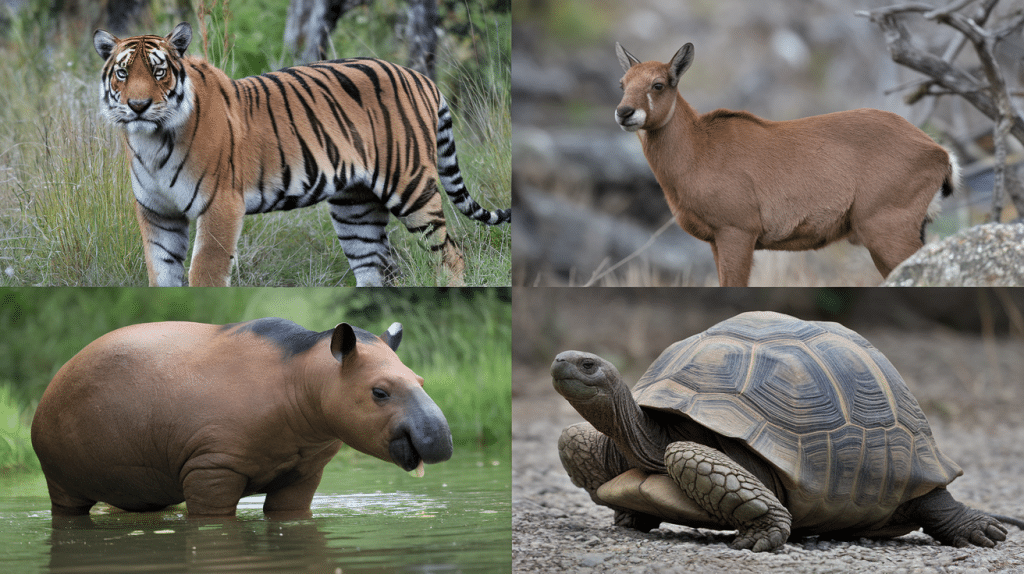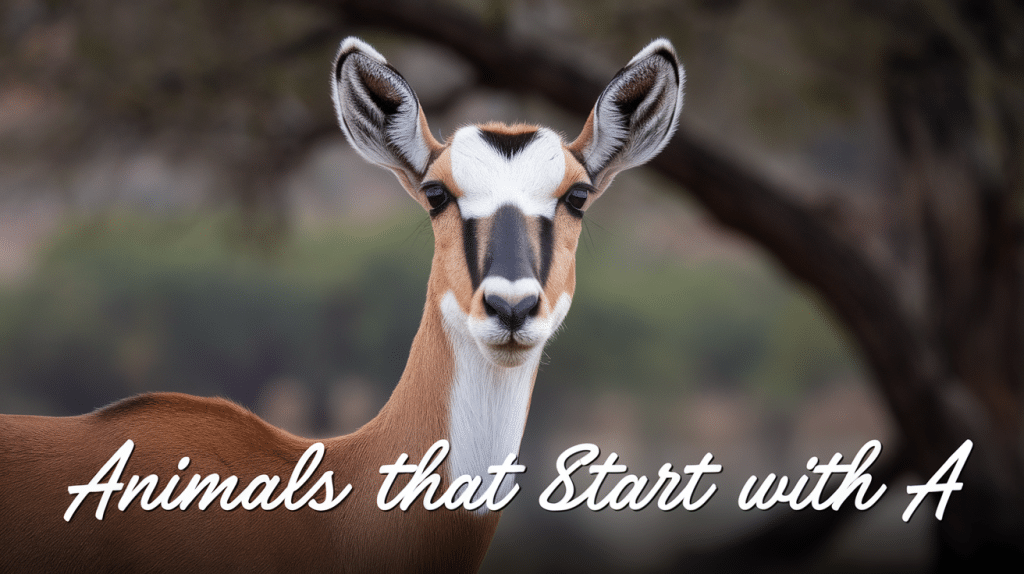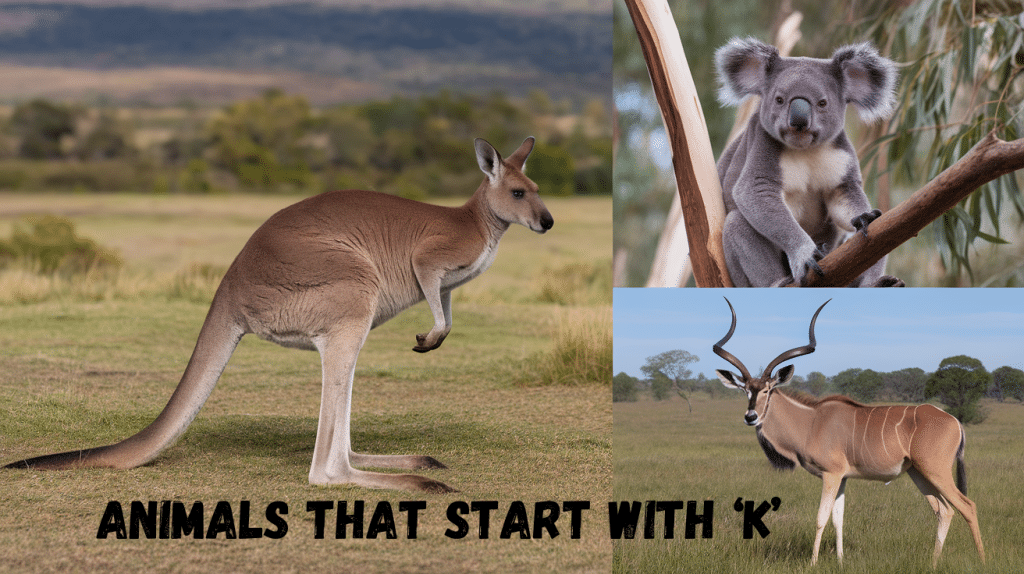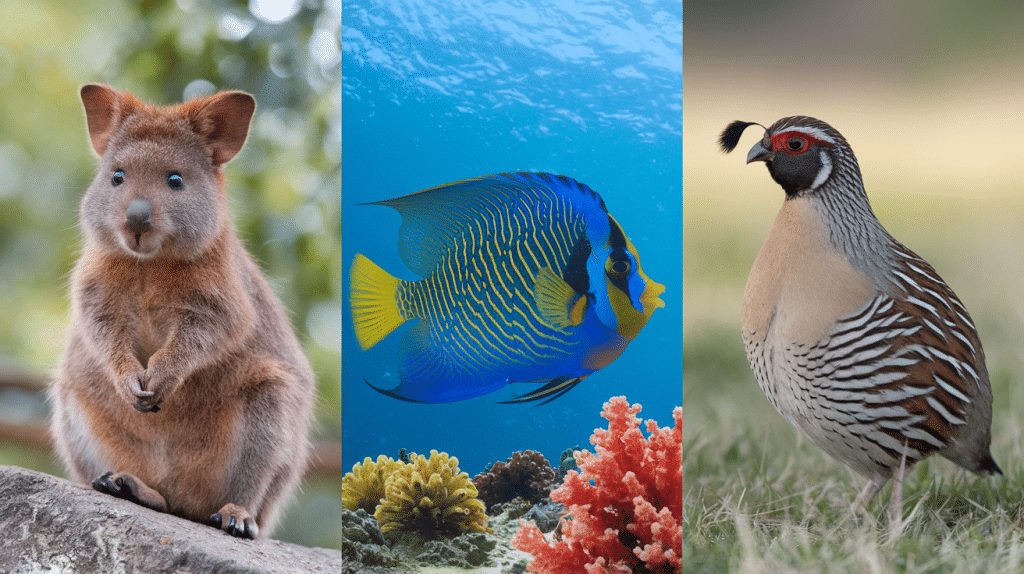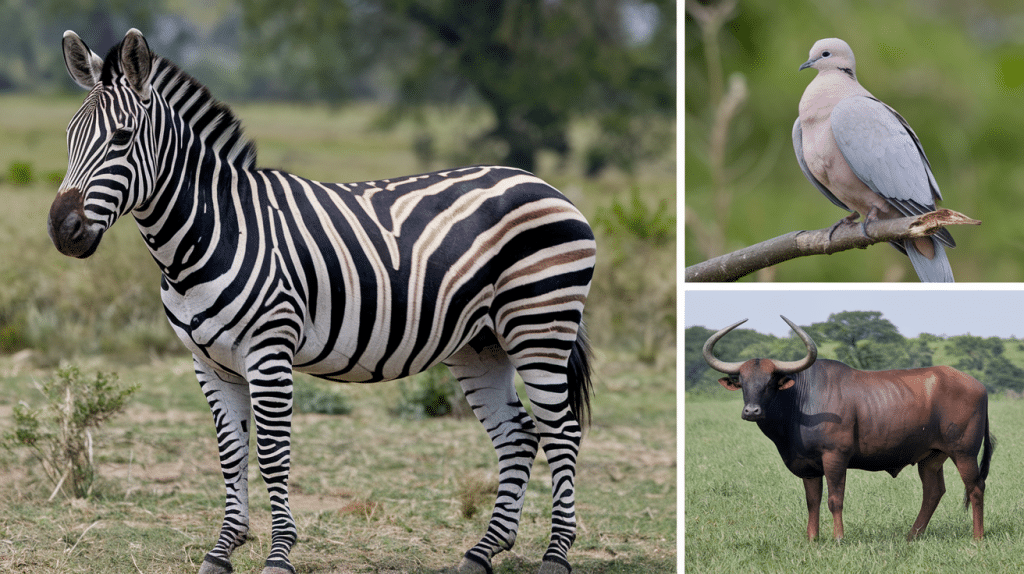Now Reading: 235 Animals that Start with C: List and Fun Facts
-
01
235 Animals that Start with C: List and Fun Facts
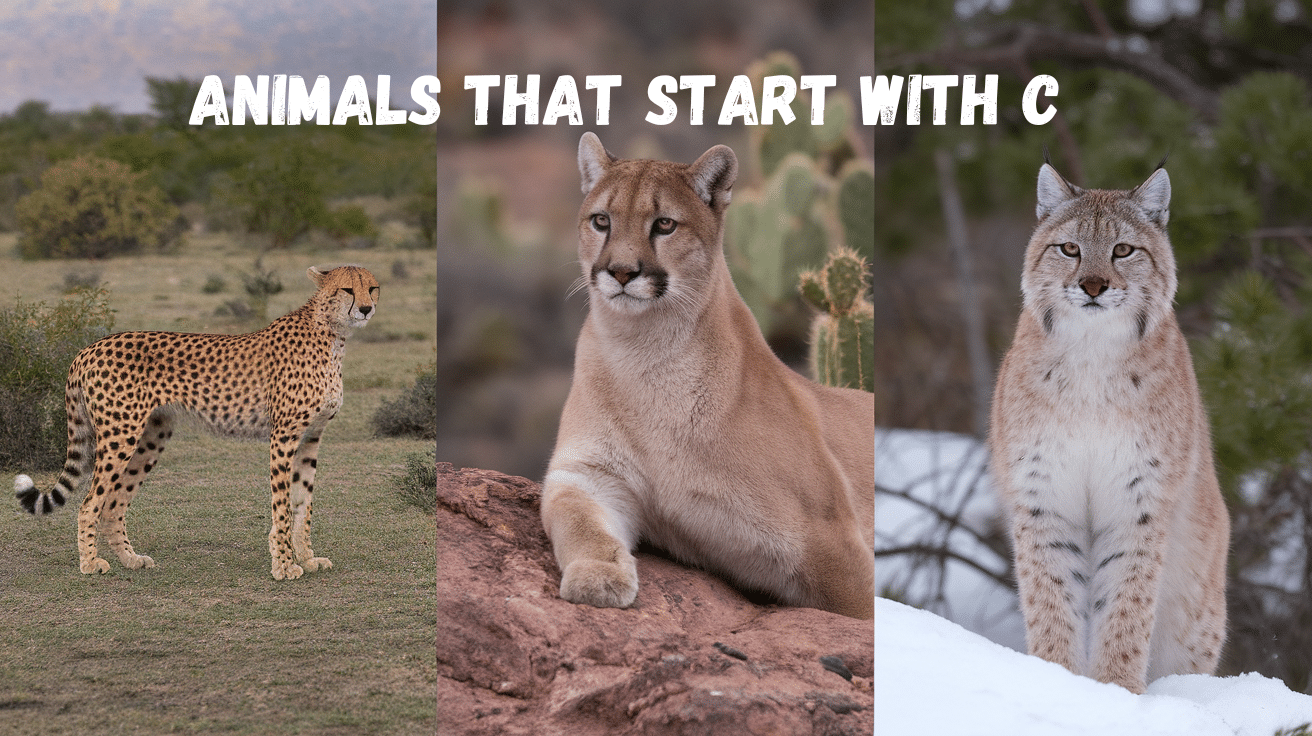
235 Animals that Start with C: List and Fun Facts
Have you heard of all the amazing animals that start with C?
Some are pets in our homes, like cats that curl up and purr on our laps. Others live in the wild, like fast cheetahs that race across the African plains.
The letter c gives us the names of both tiny and huge animals, from small crickets that hop in our yards to big crocodiles that swim in rivers.
In this blog, we’ll show you different animals that begin with c.
Whether you love learning about wildlife or just want to know more about animals, you’re in for a treat!
Get ready to meet some of the coolest animals in nature, all starting with the letter c.
Popular Animals that Start with the Letter C
1. Cheetah
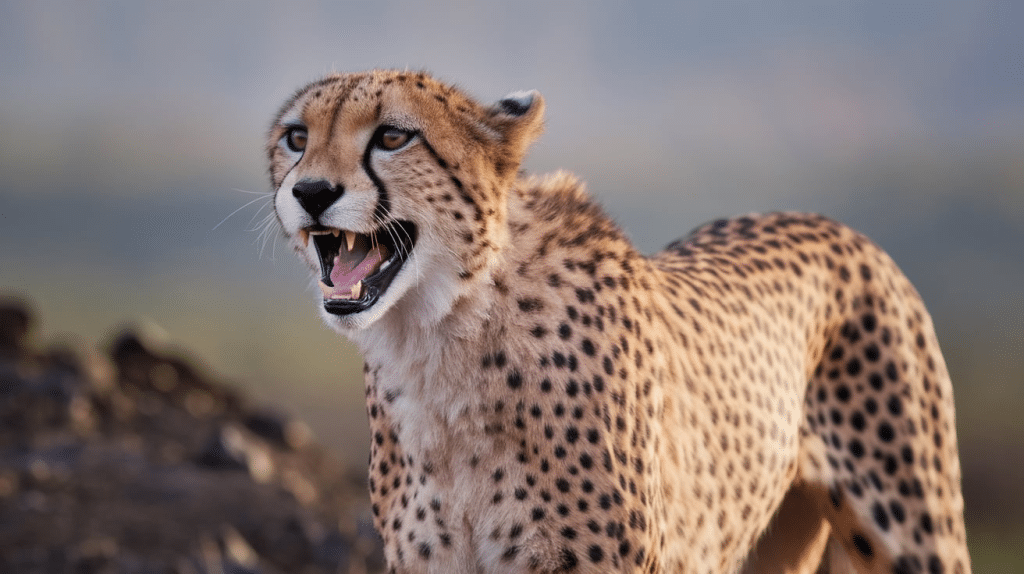
The fastest land animal, reaching speeds up to 70 mph with a slender, aerodynamic body covered in distinctive black-spotted tan fur.
Their small head, long legs, and specialized muscles make them perfectly adapted for high-speed pursuit of prey.
- Scientific name: Acinonyx Jubatus
- Origin: Africa
- Habitat: open grasslands, savannas, and dry forest areas
- Fun Fact: A cheetah’s spine acts like a spring, flexing to allow longer strides while running.
2. Cat
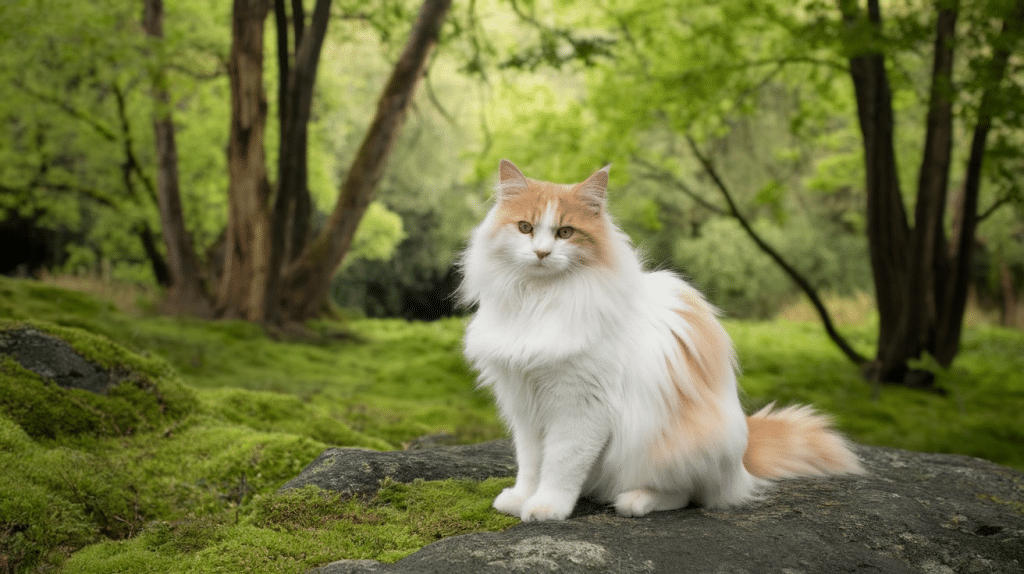
Agile and graceful felines with highly developed hunting instincts and retractable claws.
They have exceptional night vision, capable of seeing in light six times dimmer than what humans need, and possess flexible spines that enable them to always land on their feet.
- Origin: Middle East (likely Originated from Near Eastern Wildcat)
- Scientific name: felis catus
- Habitat: Adaptable to various environments, from homes to urban areas and rural settings
- Fun Fact: A cat’s brain structure is 90% similar to humans, and they have 32 muscles in each ear
3. Capybara
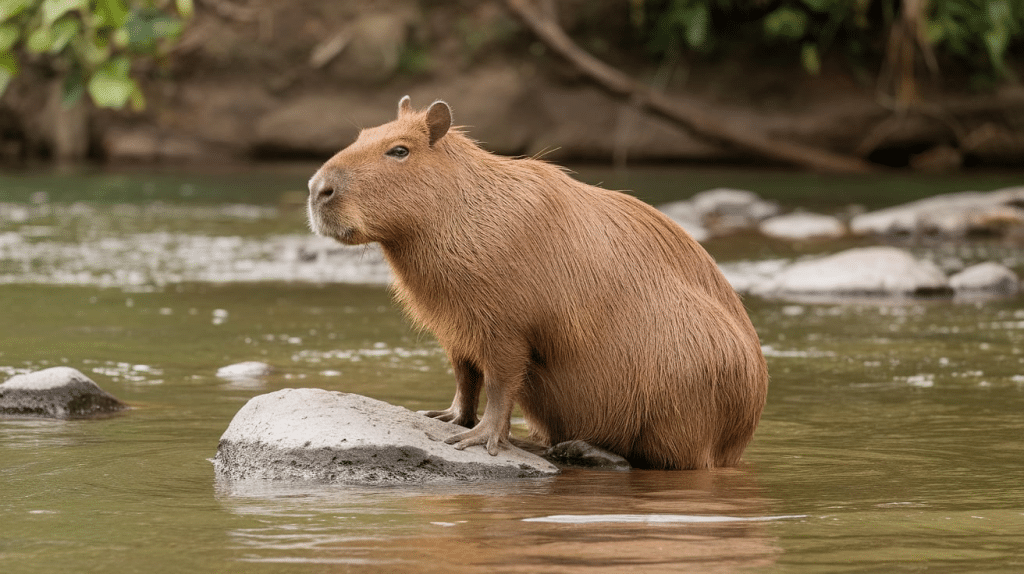
The world’s largest rodent, with a barrel-shaped body and short, coarse fur ranging from brown to reddish.
They have partially webbed toes, blunt snouts, and no tail, making them excellent swimmers.
- Origin: South America
- Scientific name: Hydrochoerus Hydrochaeris
- Habitat: Wetlands, grasslands, and forest areas near water
- Fun Fact: They can stay underwater for up to five minutes and even sleep while floating.
4. Chimpanzee
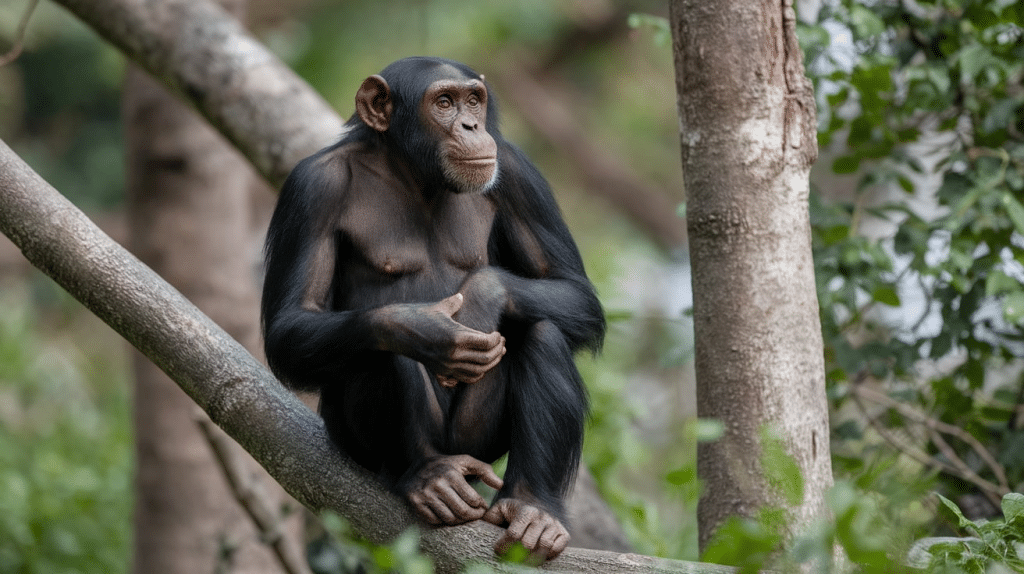
Our closest living relatives share 98% of human DNA and have strong, dexterous hands for tool use.
Their bodies are covered in dark fur, with hairless faces, large ears, and expressive eyes.
- Origin: Africa
- Scientific name: pan troglodytes
- Habitat: Tropical Rainforests and Wet Savannas
- Fun Fact: They are one of the few animals that can recognize themselves in mirrors.
5. Camel
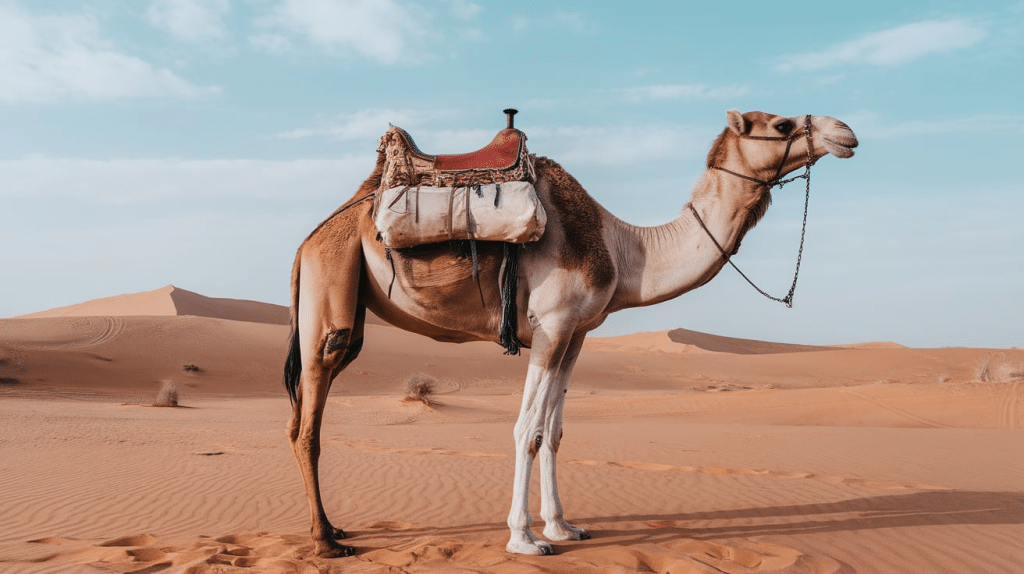
Desert-adapted mammals with distinctive humps containing fat reserves and long eyelashes to protect from sand.
Their specialized blood cells can change shape to continue flowing when dehydrated.
- Origin: North Africa and Asia
- Scientific name: Camelus (dromedaries for one-humped, bactrianus for two-humped)
- Habitat: Deserts and Arid Regions
- Fun Fact: Their humps can store up to 80 pounds of fat, allowing them to travel up to 100 miles without water.
6. Caracal
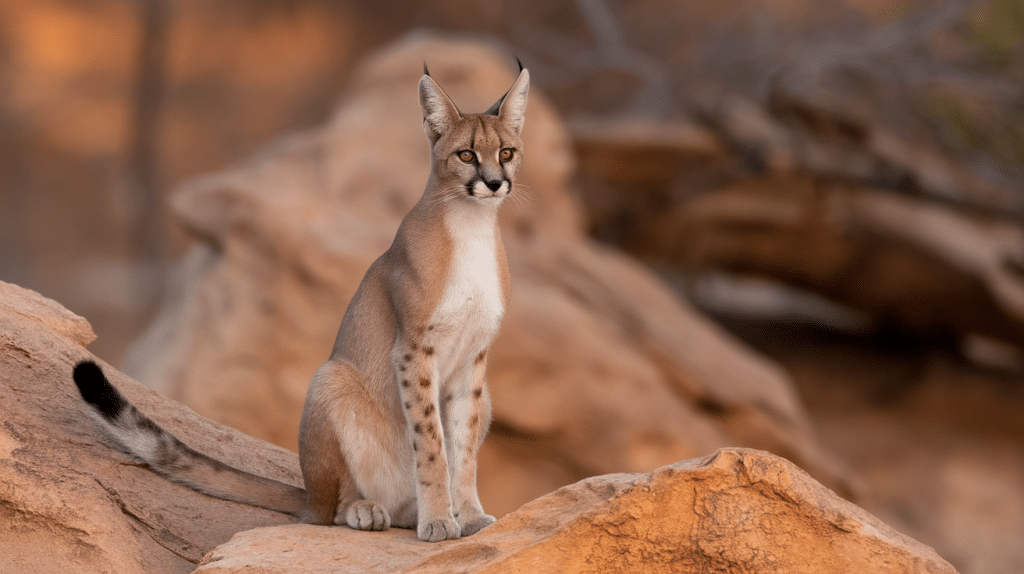
Medium-sized wild cat with distinctive long black ear tufts and a robust, muscular build.
Their powerful hind legs allow them to leap up to 10 feet high to catch birds in flight, while their tawny-red coat provides excellent camouflage.
- Origin: Africa and Middle East
- Scientific name: Caracal Caracal
- Habitat: Savannas, semi-deserts, and woodlands
- Fun Fact: Their ear tufts contain over 20 muscles that help them pinpoint prey locations with extreme precision.
7. Coyote
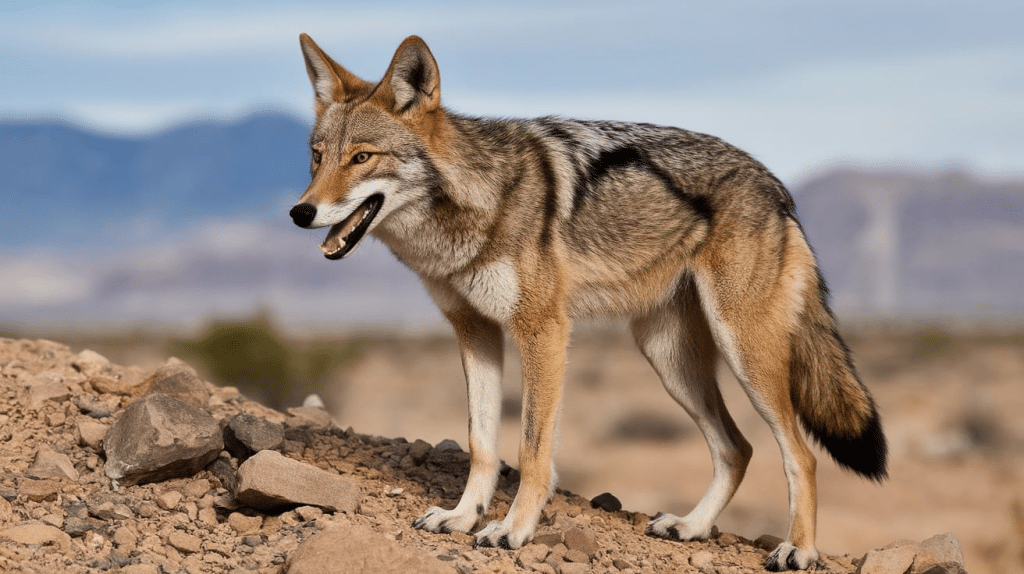
Adaptive canids with pointed ears, slender muzzles, and bushy tails are masters of survival.
Their fur varies from grayish-brown to yellowish-gray, with excellent hearing and smell that makes them skilled hunters.
- Origin: North America
- Scientific name: Canis Latrans
- Habitat: Forests, prairies, mountains, and urban areas
- Fun Fact: They can sprint at speeds of up to 40 mph and can leap over 13-foot fences.
8. Canadian Lynx
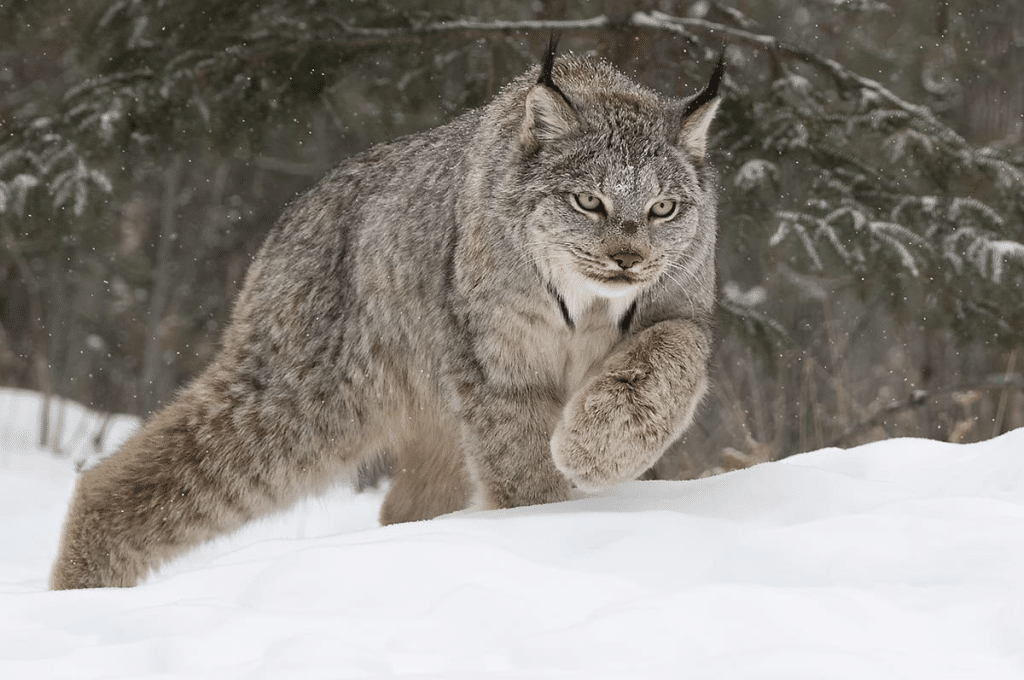
Medium-sized cat with distinctive black ear tufts, large paws, and thick silver-gray fur.
Their oversized paws act like natural snowshoes, while their specialized diet consists mainly of snowshoe hares.
- Origin: North America
- Scientific name: Lynx canadensis
- Habitat: Northern boreal forests and tundra
- Fun Fact: Their enormous paws can spread to nearly 4 inches wide, allowing them to walk on deep snow.
9. Common Wombat
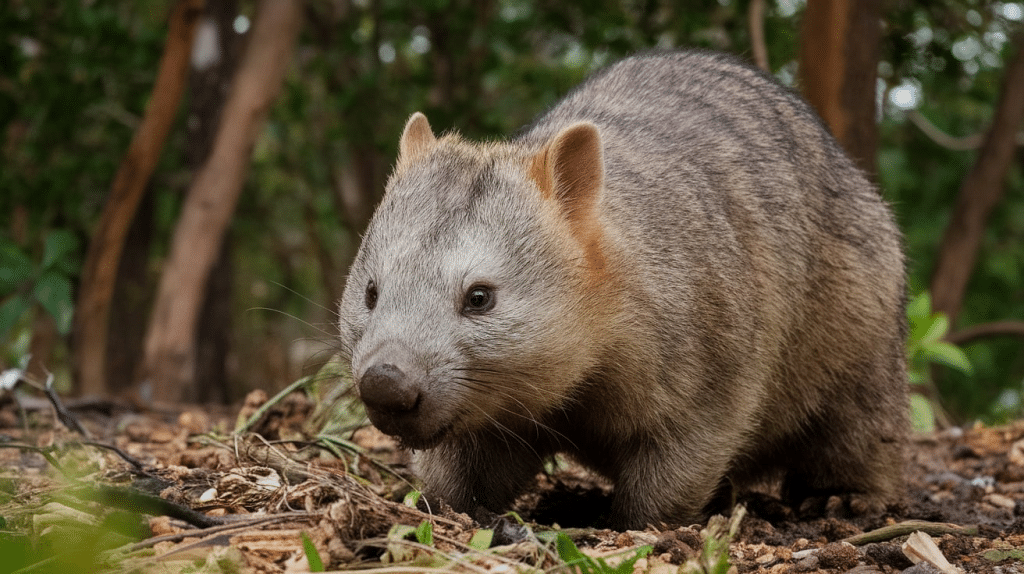
Sturdy, muscular marsupials with powerful legs and sharp claws for digging.
Their backward-facing pouch prevents dirt from entering while digging, and they have reinforced rear ends used for defense.
- Origin: Australia
- Scientific name: Vombatus Ursinus
- Habitat: Forests, mountains, and heathlands
- Fun Fact: Their droppings are cube-shaped, which prevents them from rolling away from their marking sites.
10. Clouded Leopard
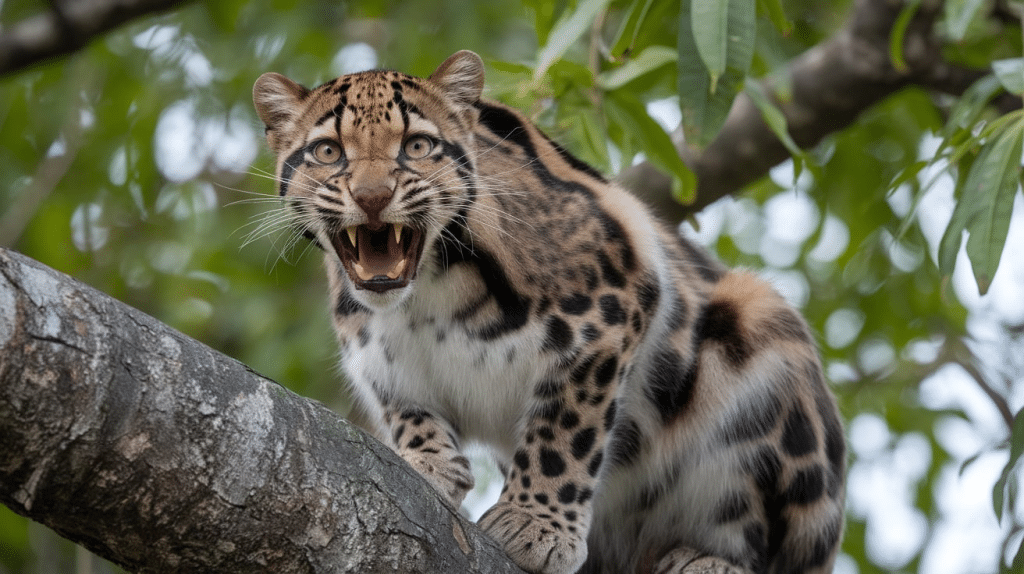
Medium-sized wild cat with distinctive cloud-like markings and unusually long canine teeth.
Their flexible ankles allow them to climb down trees headfirst, and they have proportionally the longest canine teeth of any wild cat.
- Origin: Southeast Asia
- Scientific name: Neofelis nebulosa
- Habitat: Tropical rainforests and mountainous regions
- Fun Fact: They can hang upside down from tree branches using their large paws and sharp claws.
11. Cervical
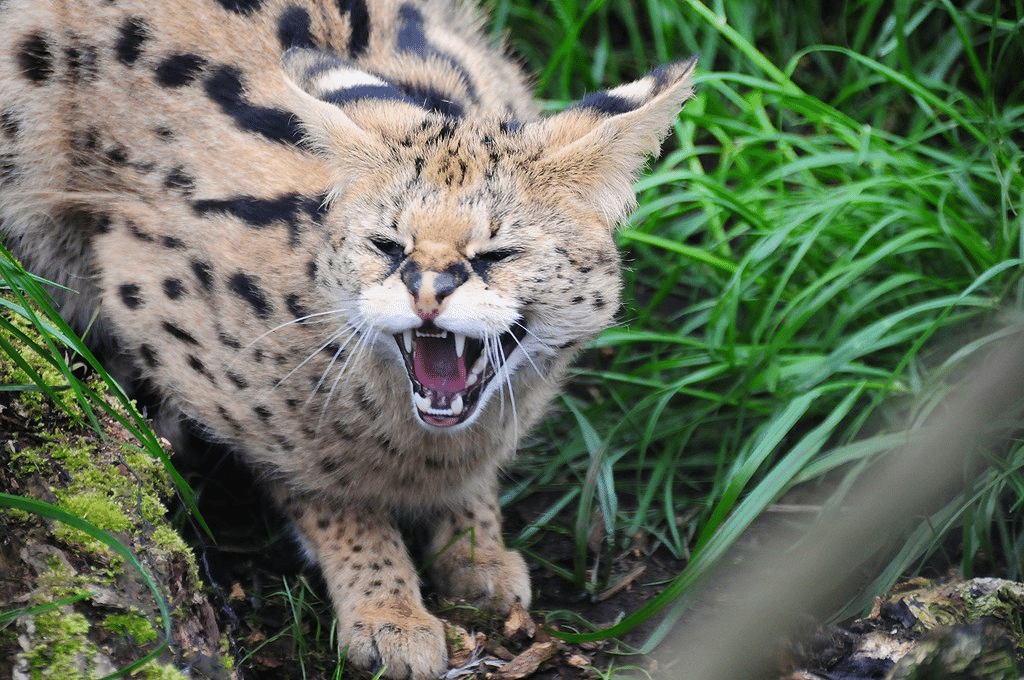
Long-legged African wild cat with spotted golden coat and oversized ears.
Their legs are proportionally the longest of any cat, giving them extraordinary jumping ability and precision in hunting.
- Origin: Africa
- Scientific name: Leptailurus serval
- Habitat: Grasslands, savannas, and wetlands
- Fun Fact: They have an 80% success rate when hunting, higher than most other wild cats.
12. Common Marmoset
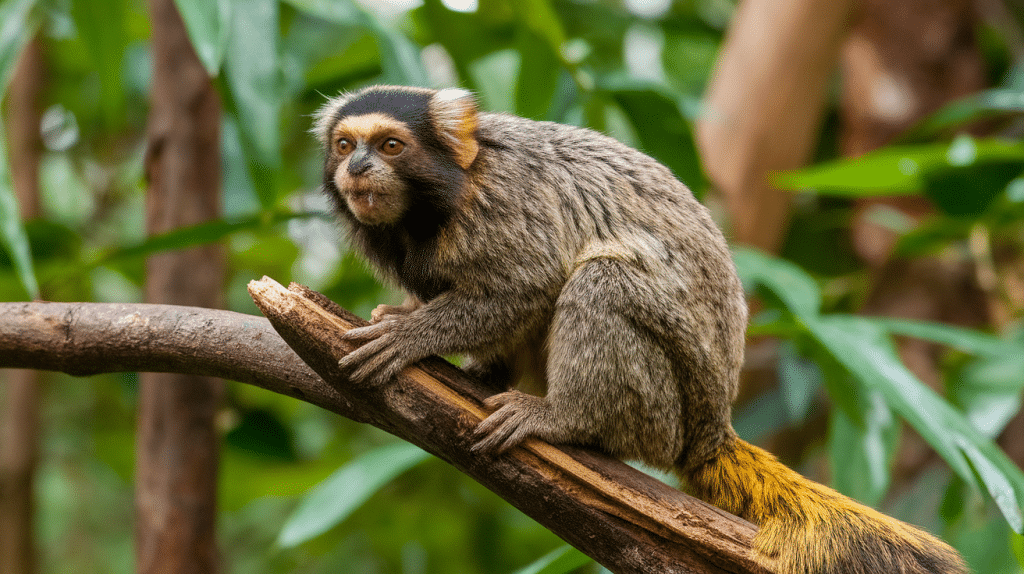
Tiny primates with distinctive white ear tufts and long, non-prehensile tails.
They have specialized lower insulators that allow them to gouge tree bark for sap, and they typically give birth to twins.
- Origin: South America
- Scientific name: Callithrix jacchus
- Habitat: Tropical forests and secondary forests
- Fun Fact: They can rotate their heads nearly 180 degrees to scan for predators while feeding.
13. Collared Peccary
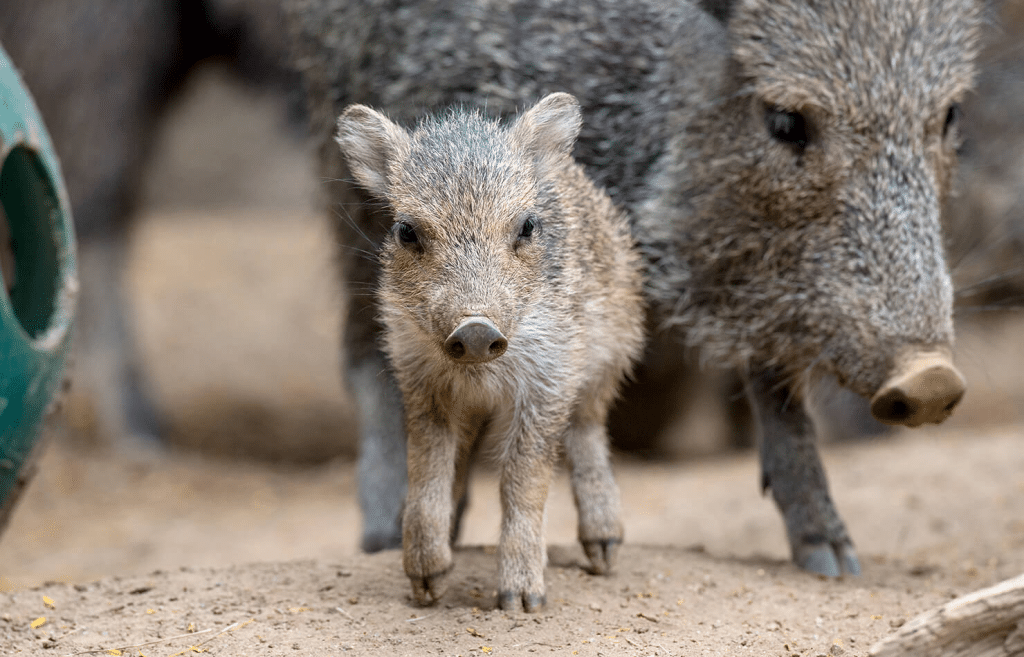
Pig-like mammals with dark bristly coats and distinctive white bands around their necks.
They possess scent glands on their backs that help mark territory and maintain group cohesion, while their compact bodies allow them to move efficiently through dense vegetation.
- Origin: Americas (from southwestern us to northern Argentina)
- Scientific name: Pecari tajacu
- Habitat: Deserts, rainforests, and woodlands
- Fun Fact: Their canine teeth continuously grow and sharpen against each other to maintain razor-sharp edges.
14. Cane Toad

Large, warty amphibians with powerful toxin glands behind their eyes.
They possess remarkably adaptable digestive systems that allow them to eat almost anything that fits in their mouths, including other cane toads.
- Origin: Central and South America
- Scientific name: Rhinella marina
- Habitat: Grasslands, woodlands, and urban areas
- Fun Fact: They can shoot their toxic secretions up to several feet when threatened.
15. coati
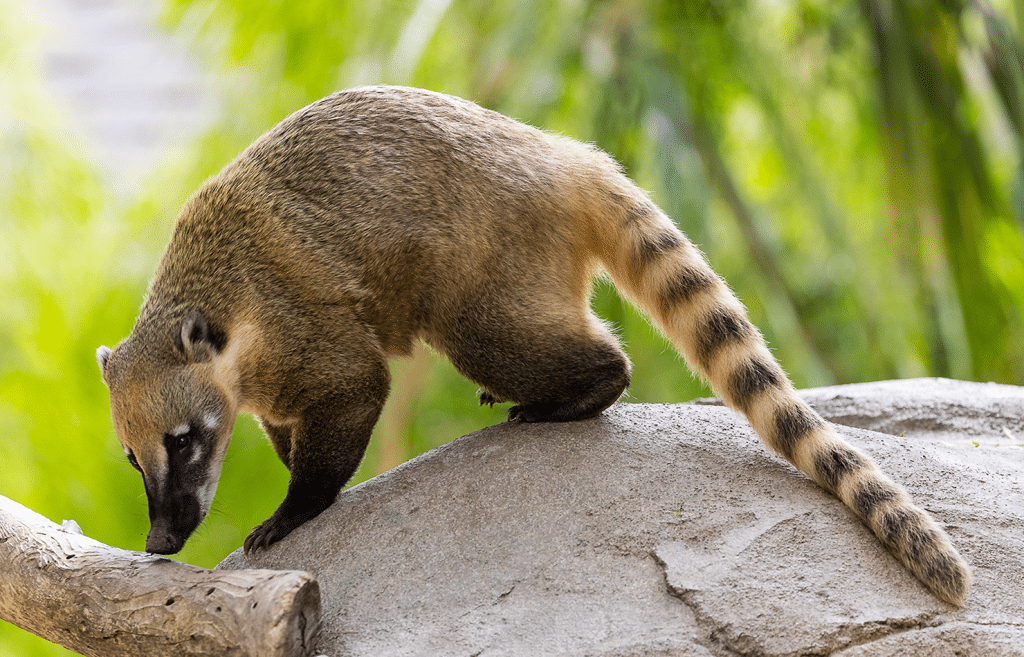
Raccoon relatives with long, ringed tails and flexible snouts perfect for foraging.
Their double-jointed ankles allow them to climb down trees headfirst, while their long tails help them balance on branches.
- Origin: America
- Scientific name: Nasua Nasua
- Habitat: Tropical forests and mountainous regions
- Fun Fact: Female coatis form large groups called bands, while adult males are solitary.
16. California Ground Squirrel
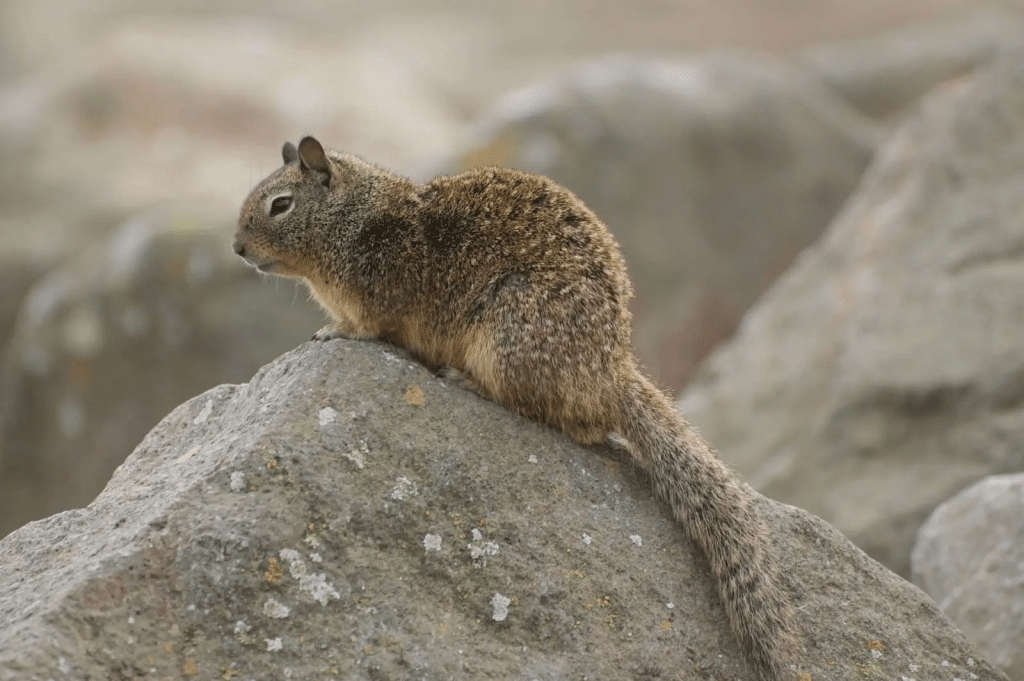
Medium-sized rodents with grayish-brown fur speckled with white dots.
They have developed an incredible immunity to rattlesnake venom and use their tails to send warning signals to other squirrels.
- Origin: Western United States
- Scientific name: Otospermophilus Beecheyi
- Habitat: Grasslands, open woodlands, and urban areas
- Fun Fact: They chew on shed snake skin and spread it on their fur to mask their scent from predators.
17. chinese pangolin
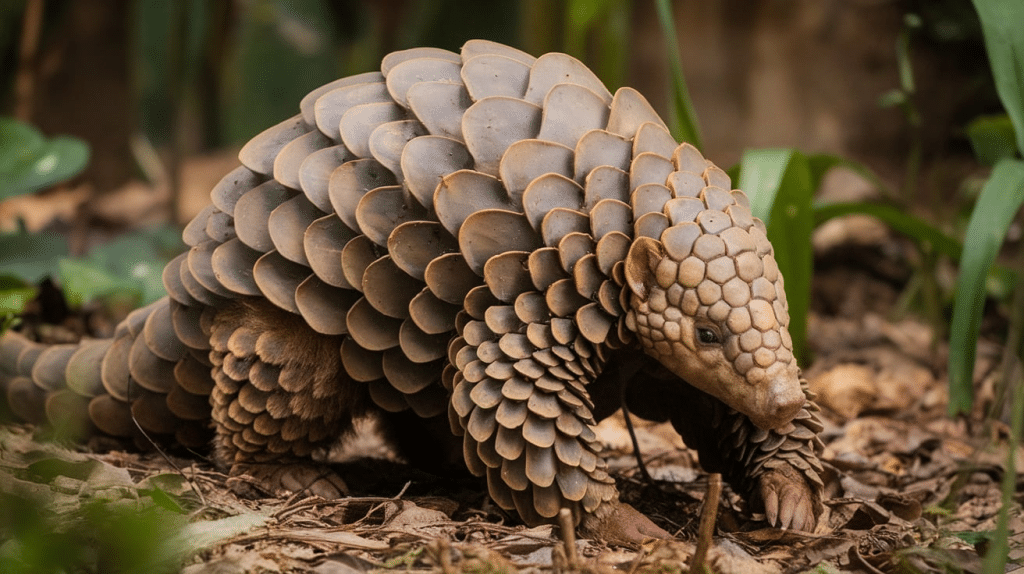
Scaly mammals covered in overlapping armor-like scales made of keratin.
They have powerful claws for digging into termite mounds and long sticky tongues that can extend longer than their bodies.
- Origin: Asia
- Scientific name: Manis Pentadactyla
- Habitat: Forests and Grasslands
- Fun Fact: Their scales can account for up to 20% of their total body weight
18. Common Genet
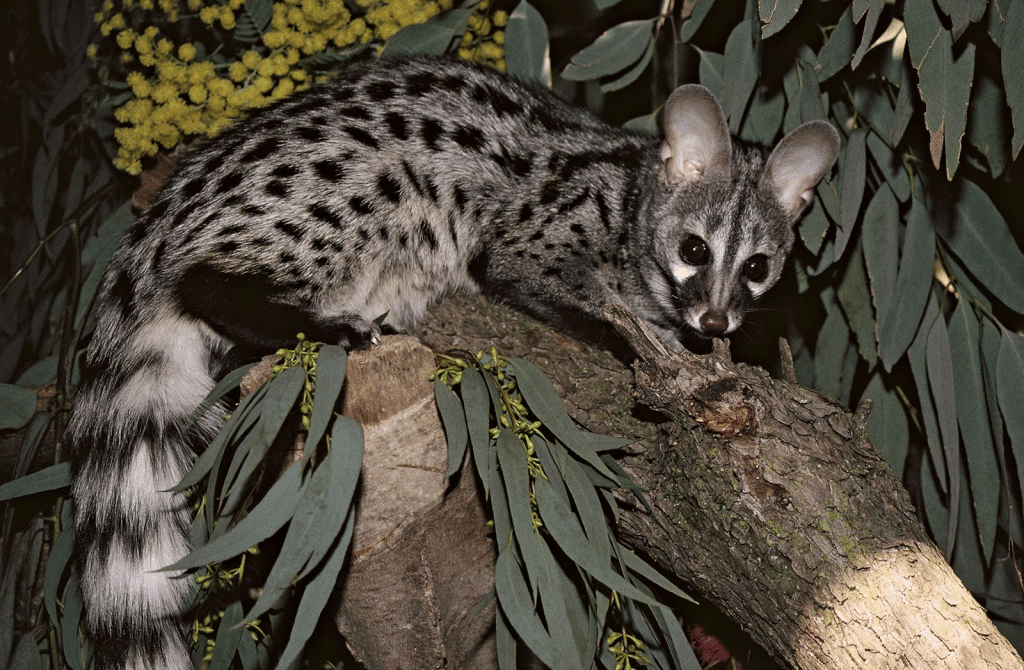
Cat-like carnivores with spotted coats and long-ringed tails for balance.
Their retractable claws and flexible bodies make them excellent climbers and hunters, while their spotted pattern provides perfect camouflage.
- Origin: Africa and parts of Europe
- Scientific name: Genetta Genetta
- Habitat: Woodlands, savannas, and rocky areas
- Fun Fact: They can rotate their hind feet 180 degrees to climb down trees headfirst.
19. Crab-Eating Fox
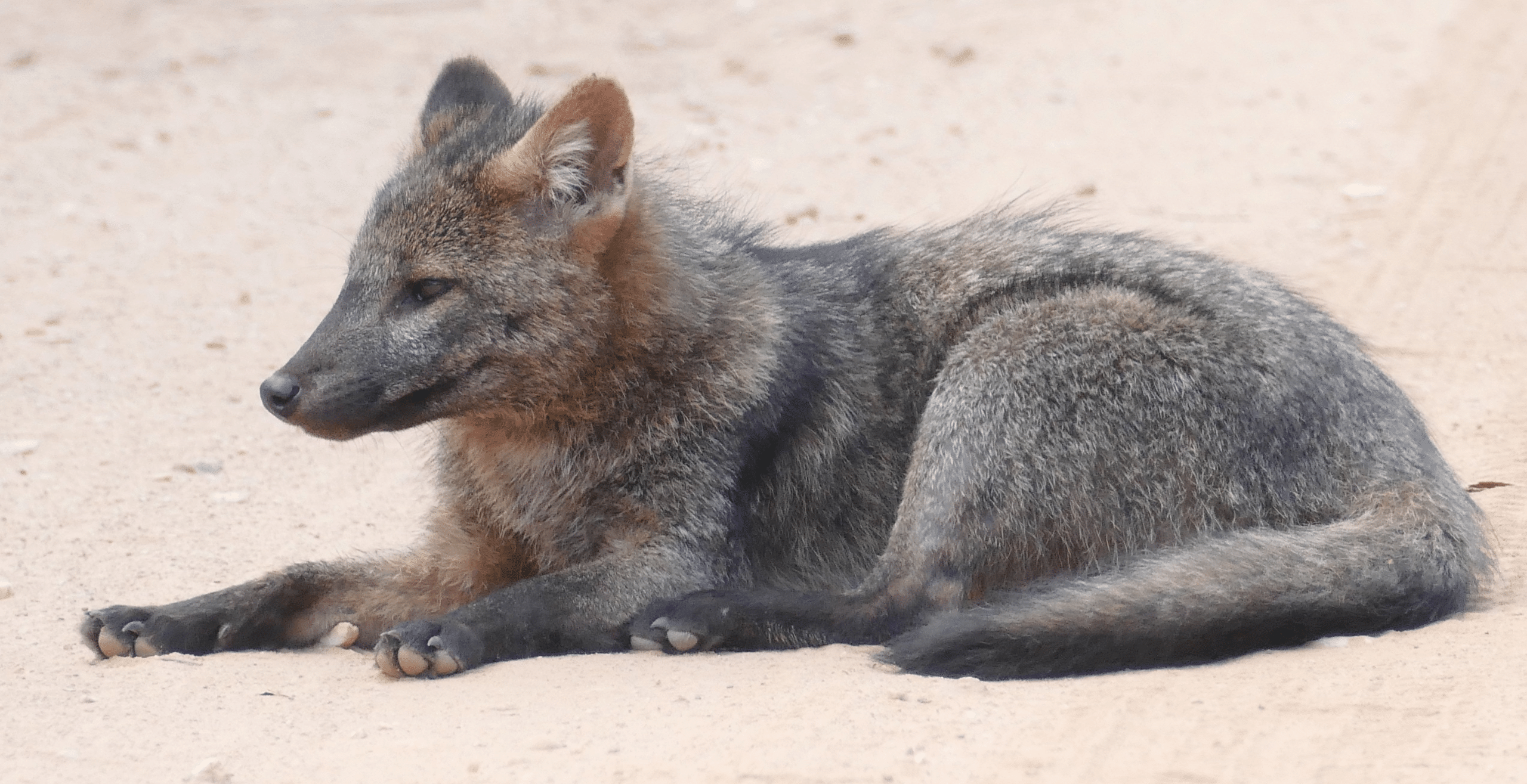
Slender canids with reddish-gray fur and black-tipped tails.
Their specialized teeth and jaws are adapted for crushing hard-shelled crabs and other crustaceans, despite what their slim build might suggest.
- Origin: South America
- Scientific name: Cerdocyon Thous
- Habitat: Woodlands, savannas, and marshlands
- Fun Fact: Despite their name, they rarely eat crabs, preferring fruits and small vertebrates instead.
20. Common Opossum
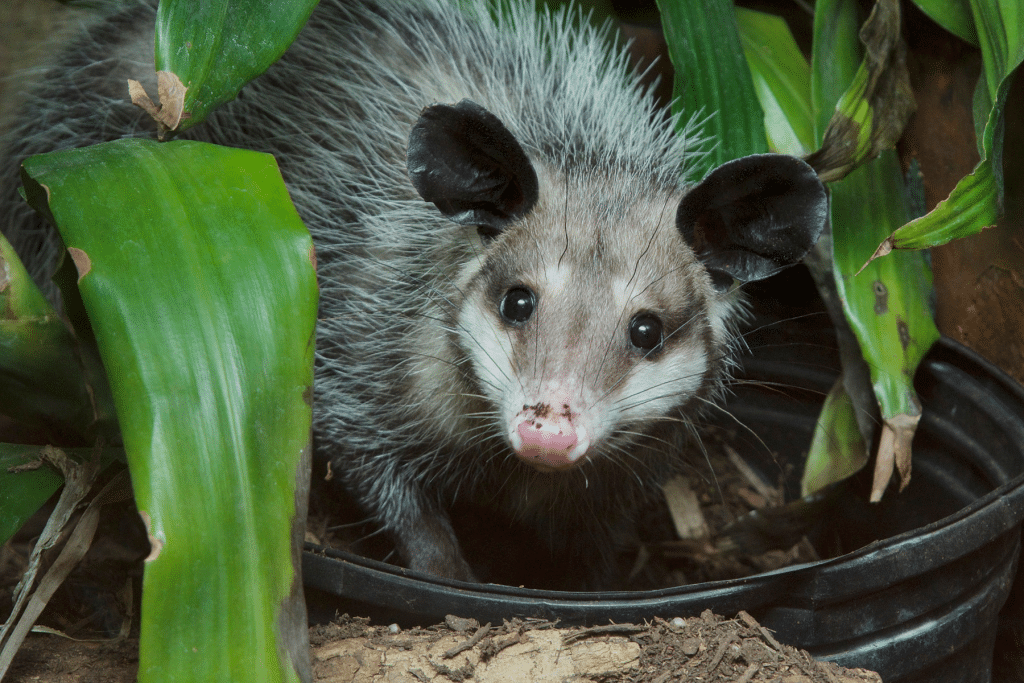
Medium-sized marsupial with a prehensile tail and opposable thumbs on their hind feet.
They have a distinctive white face, black ears, and grayish-white body, with remarkable immune systems that make them resistant to snake venom and rabies.
- Origin: America
- Scientific name: Didelphis Marsupialis
- Habitat: Forests, Urban Areas, and Farmlands
- Fun Fact: They have the shortest pregnancy of any mammal – just 12-13 days.
21. Crested Porcupine
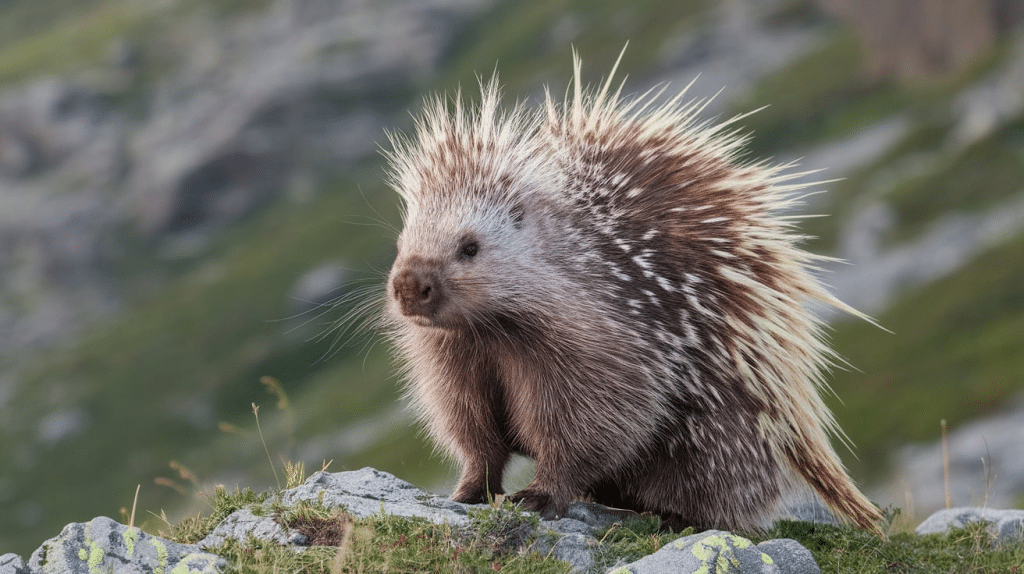
Large rodents with distinctive black and white quills that can grow up to 35 inches long.
They possess hollow quills on their tails that rattle when shaken as a warning signal to predators.
- Origin: Southern Europe, North and Central Africa
- Scientific name: Hystrix Cristata
- Habitat: Rocky hills, Forests, and Savannas
- Fun Fact: Their quills are modified hairs made of keratin, the same material as human fingernails.
22. Cuban Hutia
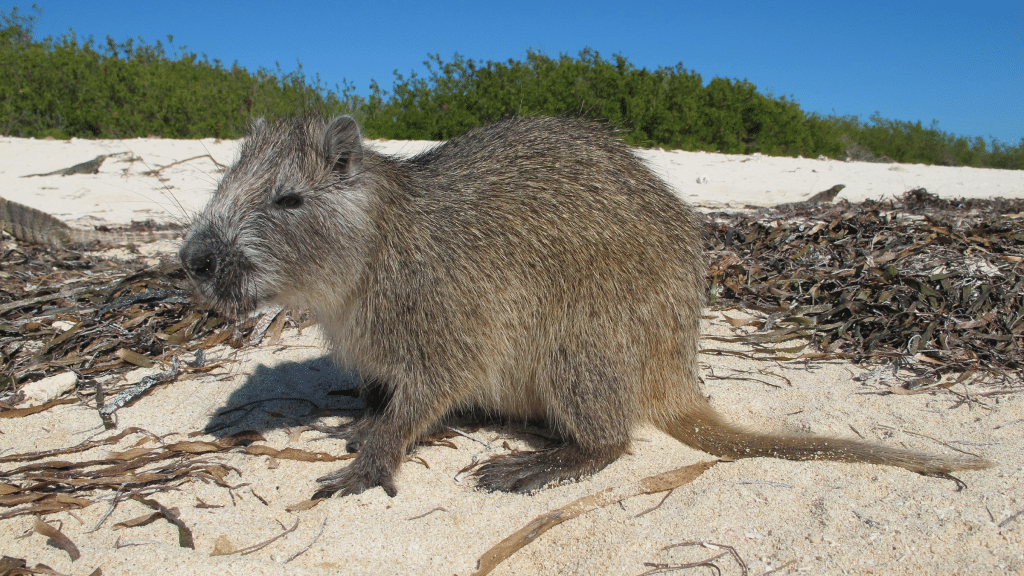
Large rodents with stout bodies and short, thick tails.
Their powerful jaws and teeth allow them to crack open tough fruits and nuts, while their strong limbs make them excellent climbers.
- Origin: Cuba
- Scientific name: Capromys Pilorides
- Habitat: Forests and rocky areas
- Fun Fact: They can survive without drinking water, getting all their moisture from food.
23. Chinese Water Deer
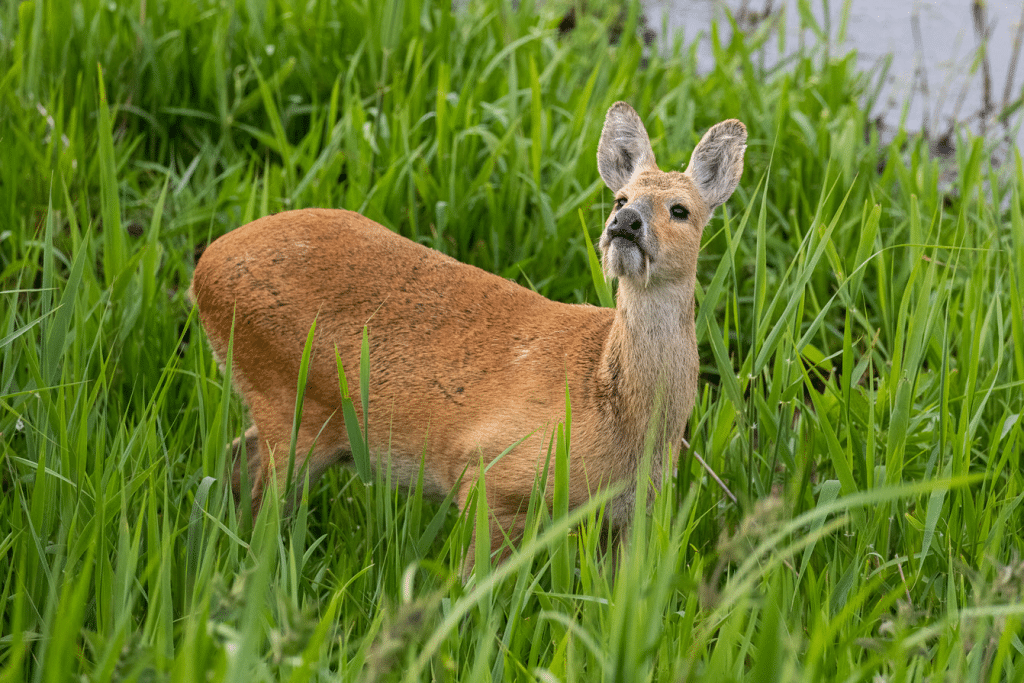
Small deer lack antlers but possess prominent tusks that extend below their lower jaw.
They have large, rounded ears and a distinctive teddy bear-like face, earning them the nickname “vampire deer.”
- Origin: China and Korea
- Scientific name: Hydropotes Inermis
- Habitat: River valleys, reed beds, and marshlands
- Fun Fact: Males use their tusks in combat during mating season instead of antlers.
24. Cougar
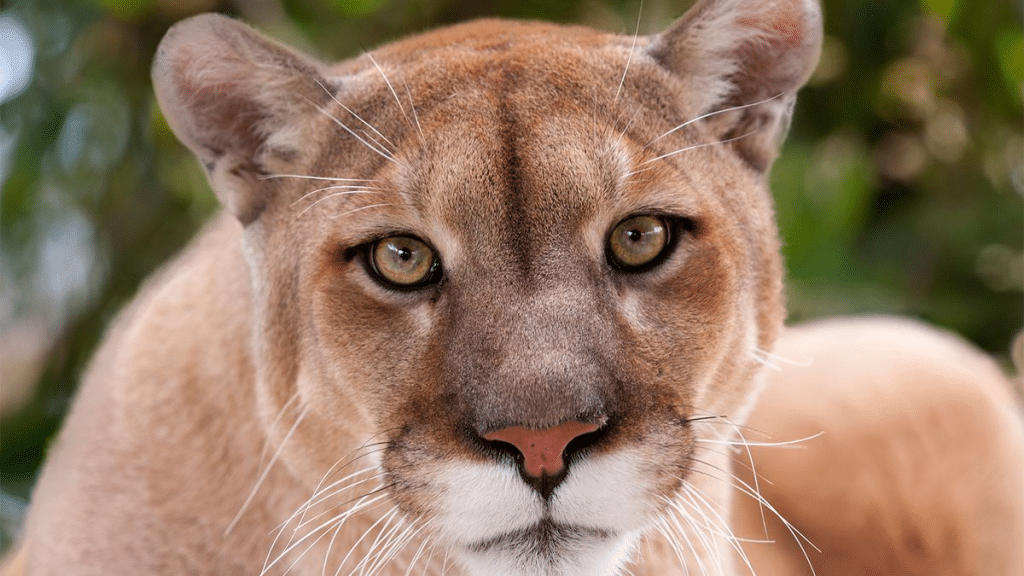
Powerful and agile big cats with a muscular build and tawny-colored coats without spots or stripes.
They possess remarkably strong hind legs that enable them to leap up to 40 feet horizontally and 15 feet vertically.
- Origin: Americas
- Scientific name: Puma Concolor
- Habitat: Mountains, forests, deserts, and grasslands
- Fun Fact: Cougars can’t roar like other big cats but instead make chirping sounds similar to birds.
25. Common Wallaroo
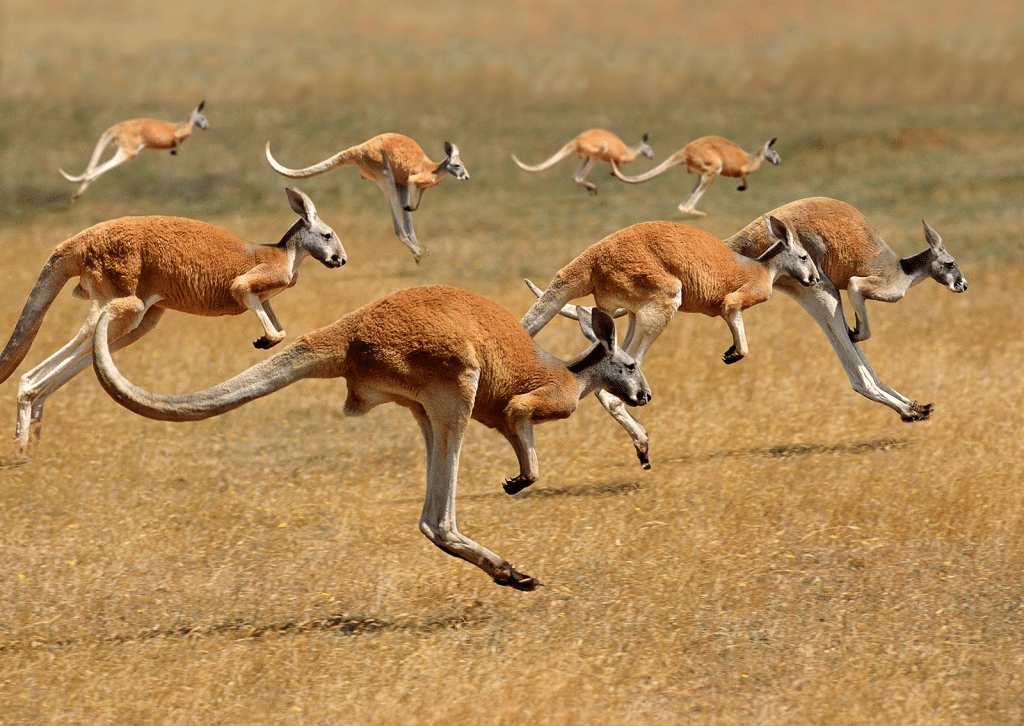
Robust marsupials with powerful hind legs and muscular tails for balance.
Their thick, coarse fur varies in color from grey to reddish-brown, helping them blend into rocky environments.
- Origin: Australia
- Scientific name: Macropus robustus
- Habitat: Rocky outcrops and hilly areas
- Fun Fact: Their specialized feet allow them to grip and move efficiently on steep, rocky terrain.
26. Common Red Fox
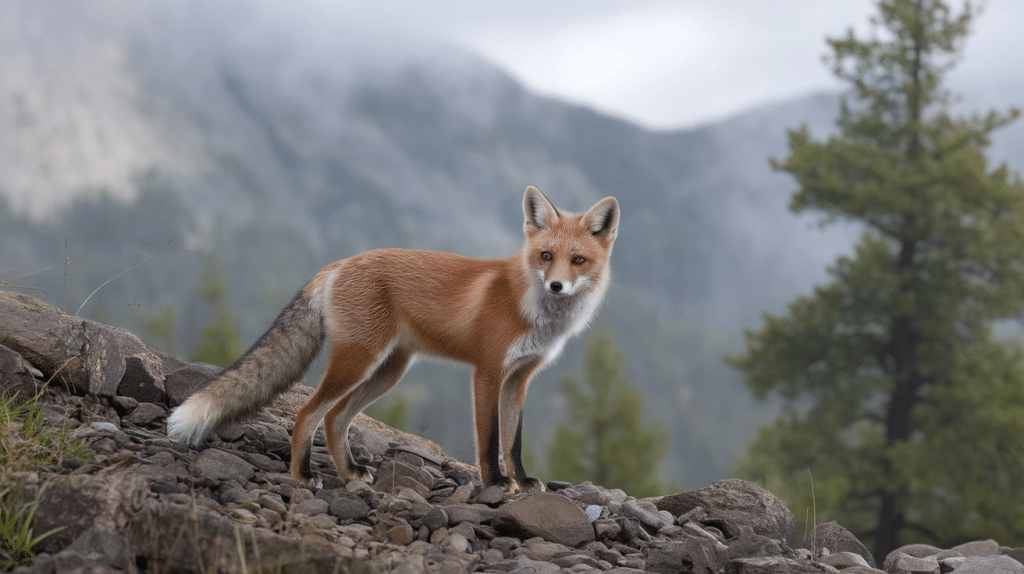
Adaptable canids with distinctive red fur, black legs, and white-tipped bushy tail.
They possess remarkable intelligence and problem-solving abilities, with excellent hearing that can detect rodents underground.
- Origin: Northern Hemisphere
- Scientific name: Vulpes Vulpes
- Habitat: Forests, Grasslands, Mountains, and Urban Areas
- Fun Fact: They can hear low-frequency sounds of rodents digging underground from nearly 40 yards away.
27. Crab-Eating Raccoon

Sleek, adaptable raccoon species native to central and south American tropical forests.
Primarily found near water bodies, this omnivorous mammal uses its dexterous paws to hunt crabs, small prey, and forage for fruits.
- Origin: Central and South America
- Scientific name: procyon cancrivorus
- Habitat: Tropical and subtropical forests near rivers and coastal regions
- Fun Fact: Unlike other raccoons, it has longer limbs and a more pointed snout, making it particularly adept at catching crustaceans in water
28. Chilean Flamingo (though It Wades, It’s Land-Dwelling)

A tall, pale pink flamingo species that inhabits the diverse landscapes of South America’s western regions.
Known for its distinctive curved neck and filter-feeding behavior, it thrives in both coastal and high-altitude environments.
- Origin: South America (Chile, Argentina, Bolivia, Peru)
- Scientific name: Phoenicopterus Chilensis
- Habitat: Saltwater and freshwater lakes, lagoons, coastal marine environments, Andean plateaus
- Fun Fact: They perform elaborate synchronized courtship dances in massive colonies and can stand on one leg for hours to conserve body heat
29. Common Degu
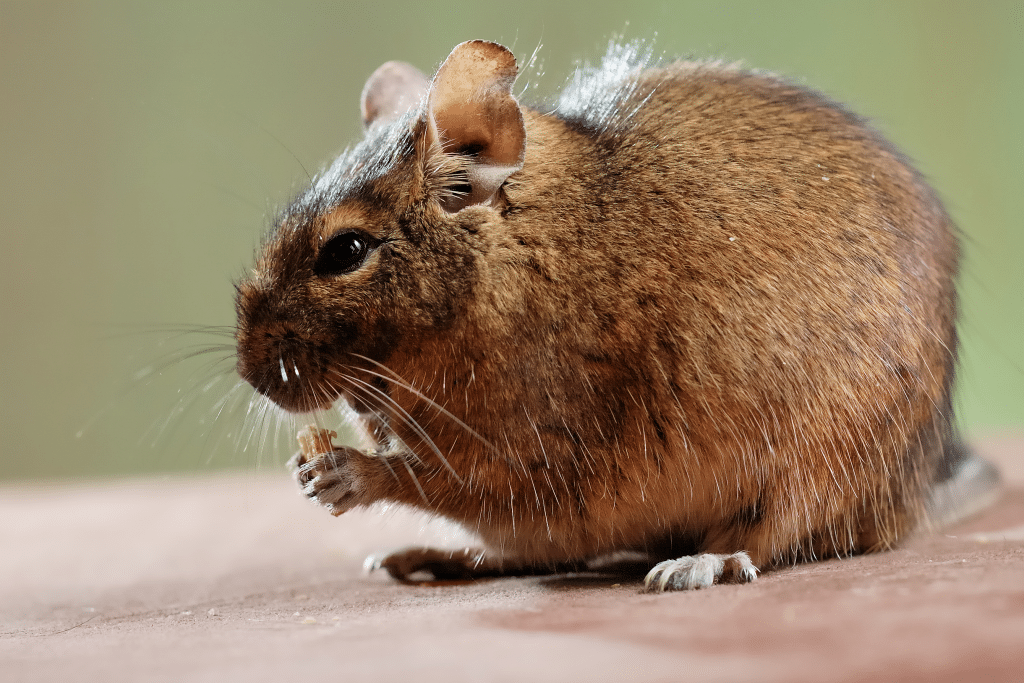
Common degus have compact bodies with brownish-gray fur, large ears, and distinctive yellow teeth.
They display remarkable dexterity with their paws and exceptional problem-solving abilities, often mastering complex puzzles to access food.
- Origin: Chile
- Scientific name: Octodon Degus
- Habitat: Scrublands and rocky areas of central Chile
- Fun Fact: Only rodents are known to synchronize their circadian rhythms when living together
30. Carpathian Brown Bear
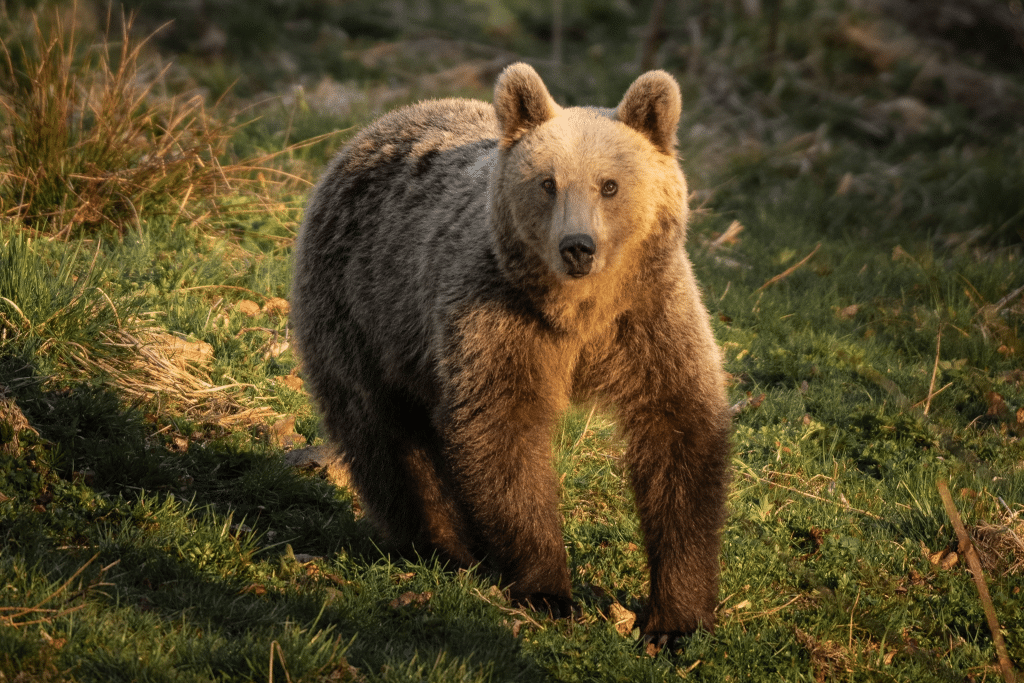
Carpathian brown bears boast massive bodies with thick, dark brown fur and powerful shoulders that form a distinctive hump.
They possess incredible strength for digging and climbing, combined with keen senses that allow them to detect food from miles away.
- Origin: Eastern Europe
- Scientific name: Ursus arctos arctos
- Habitat: Forested mountain regions of Romania, Ukraine, Poland
- Fun Fact: Can recognize and remember individual human faces in their territory
31. Cretan Wild Goat

Cretan wild goats have impressive curved horns and agile bodies with reddish-brown coats that blend into their rocky mountain habitat.
They show extraordinary climbing ability, navigating near-vertical cliff faces with precision and balance that allows them to reach vegetation inaccessible to other animals.
- Origin: Crete, Greece
- Scientific name: Capra aegagrus cretica
- Habitat: Rocky mountain ranges of Crete
- Fun Fact: Can leap up to 6 meters between rocky cliff faces
32. Cuban Solenodon
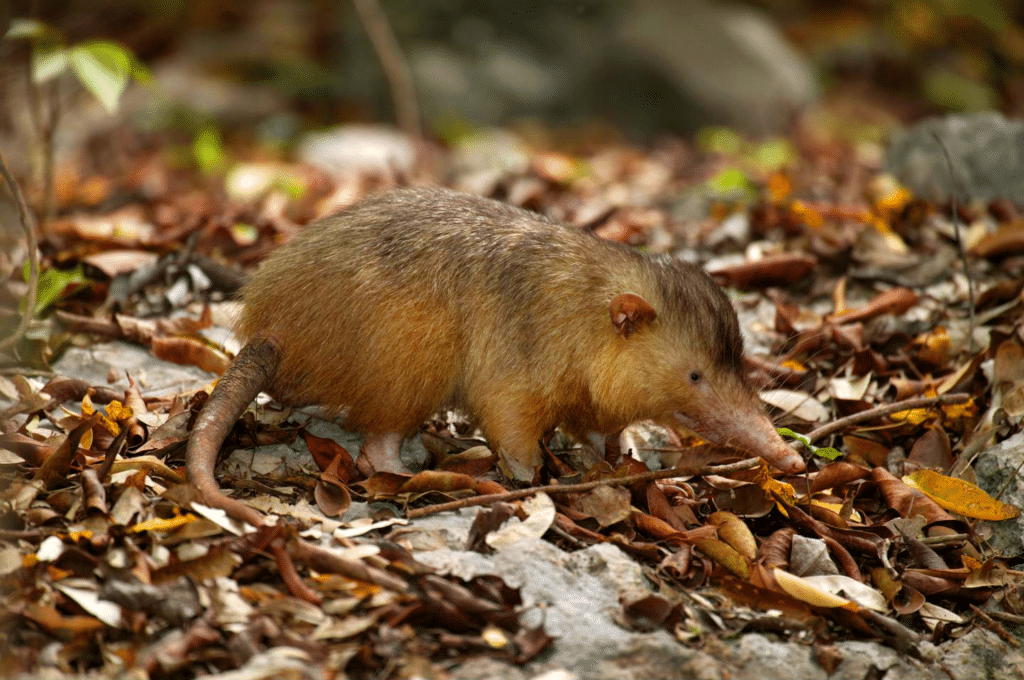
The Cuban solenodon has a long, flexible snout, shaggy brown fur, and unusual joint structures that give it a distinctive waddling gait.
It possesses venomous saliva delivered through specialized grooved teeth, making it one of the few mammals capable of injecting toxins when biting prey.
- Origin: Cuba
- Scientific name: Solenodon Cubanus
- Habitat: Forests of Eastern Cuba
- Fun Fact: It produces toxic saliva through specialized grooves in its teeth
33. Cuvier’s Dwarf Caiman
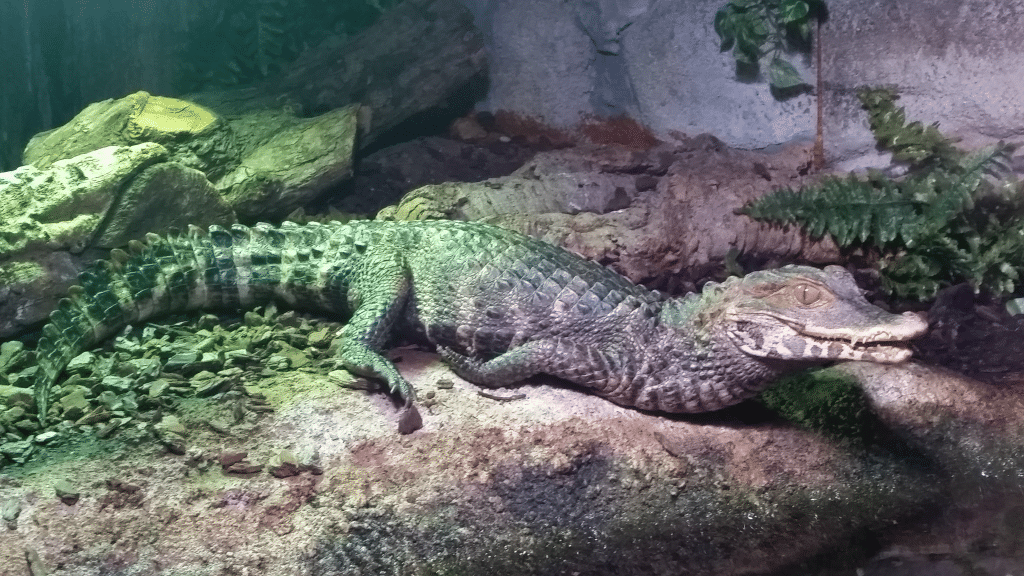
Cuvier’s dwarf caimans have armored bodies with ridged scales and powerful jaws that contrast with their relatively small size compared to other crocodilians.
They demonstrate remarkable stealth in water, capable of remaining motionless for hours while using their excellent night vision to detect prey movements with extraordinary sensitivity.
- Origin: South America
- Scientific name: paleosuchus palpebrosus
- Habitat: Freshwater rivers and streams in the Amazon basin
- Fun Fact: Can survive in water with very low oxygen levels.
34. Chacoan Peccary
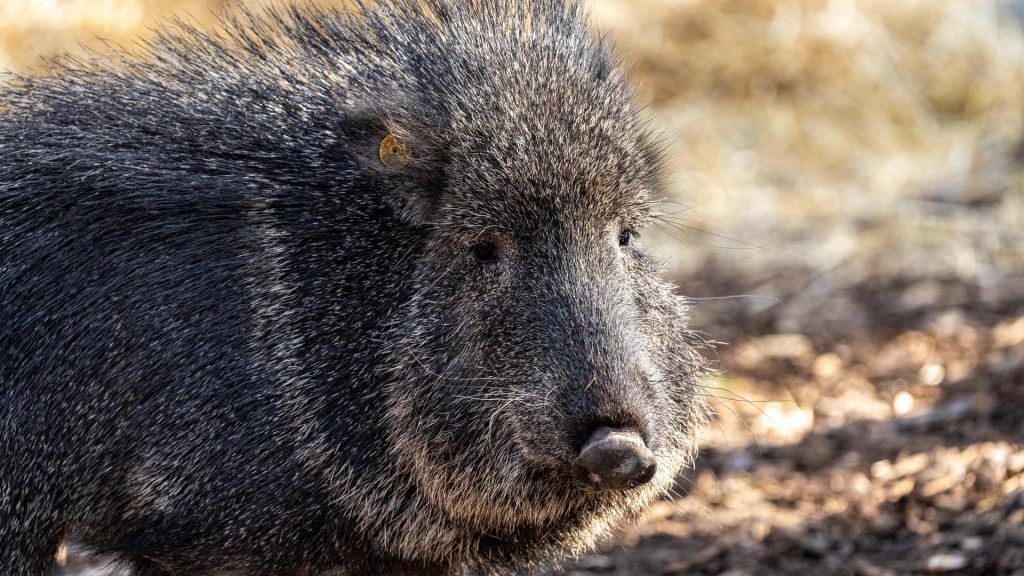
A rare, pig-like mammal endemic to the dry Chaco region of South America, surviving in one of the most threatened Habitats on the continent.
Known for its unique adaptation to extremely arid environments and critically endangered status.
- Origin: Argentina, Bolivia, Paraguay
- Scientific name: Catagonus Wagneri
- Habitat: Dry chaco woodland and scrubland
- Fun Fact: Considered a living fossil, with few close living relatives
35. Collared Lemur
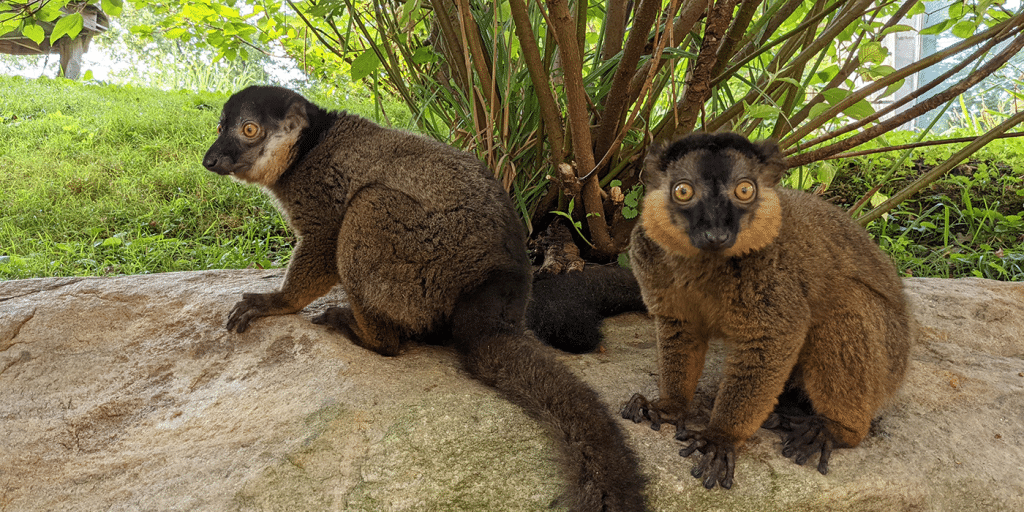
A distinctive primate found in the southeastern forests of Madagascar, characterized by its unique coloration and social behavior.
Lives in mixed-sex groups within the rapidly diminishing tropical rainforest ecosystems.
- Origin: Madagascar
- Scientific name: Eulemur Collaris
- Habitat: Tropical and subtropical moist forests
- Fun Fact: Can communicate through a complex system of vocalizations and scent marking
36. Common Rock Hyrax
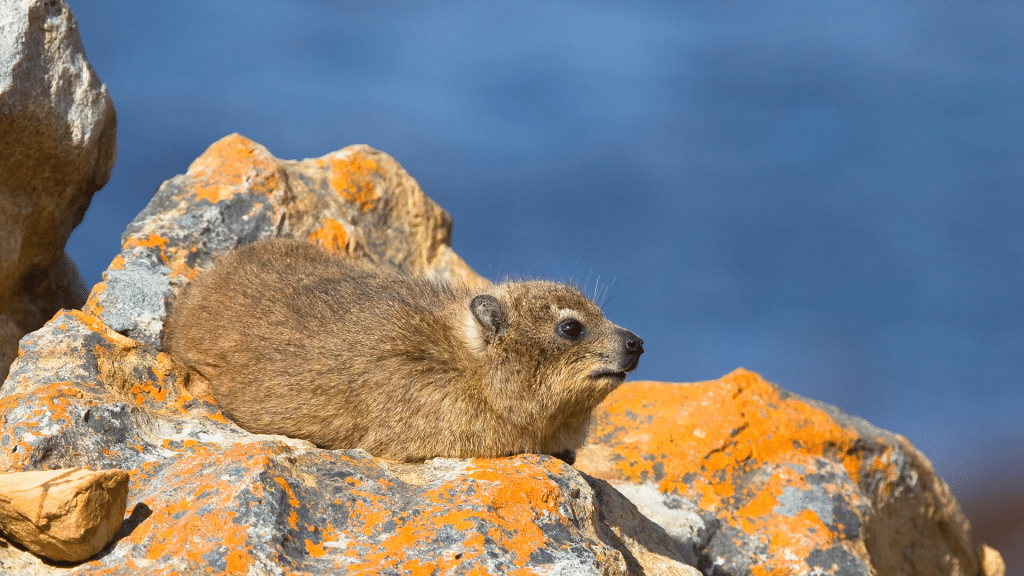
A small, furry mammal resembling a rodent but more closely related to elephants, found across rocky Habitats in Africa and the Middle East.
Highly social animals living in large family groups with complex communication systems.
- Origin: sub-saharan africa, middle east
- Scientific name: procavia capensis
- Habitat: rocky outcrops, mountain ranges
- Fun Fact: Despite the small size, it shares common ancestor with elephants
37. Chinese Giant Salamander
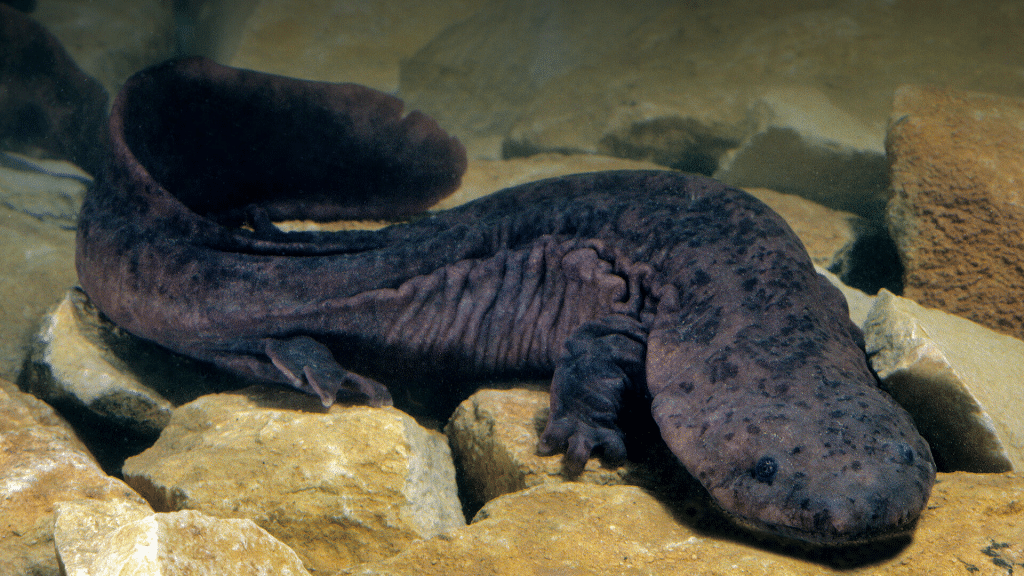
The world’s largest amphibian, inhabiting mountain streams and rivers in central China, is critically endangered due to Habitat loss and overexploitation.
A prehistoric species that has remained virtually unchanged for millions of years.
- Origin: China
- Scientific name: Andrias davidianus
- Habitat: Mountain streams and rivers
- Fun Fact: It can grow up to 1.8 meters long and breathe through its skin
38. Common Brushtail Possum
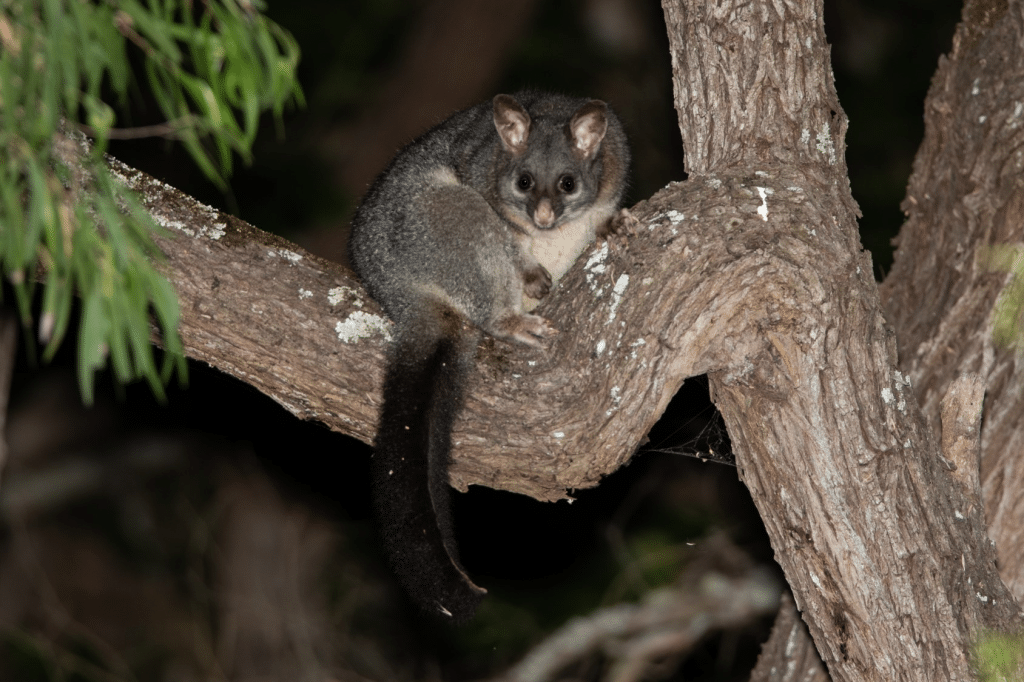
It is a highly adaptable marsupial with remarkable night vision and excellent climbing skills.
These nocturnal animals have thick, woolly fur that varies from silver-grey to black, with a distinctive fluffy tail and large pointed ears.
- Scientific name: Trichosurus vulpecula
- Origin: Australia
- Habitat: Forests, woodlands, urban areas, and farmland
- Fun fact: They got their name from their thick, prehensile tail, which looks like a brush and can wrap around branches to help them balance while climbing
39. Ceylon Spiny Mouse
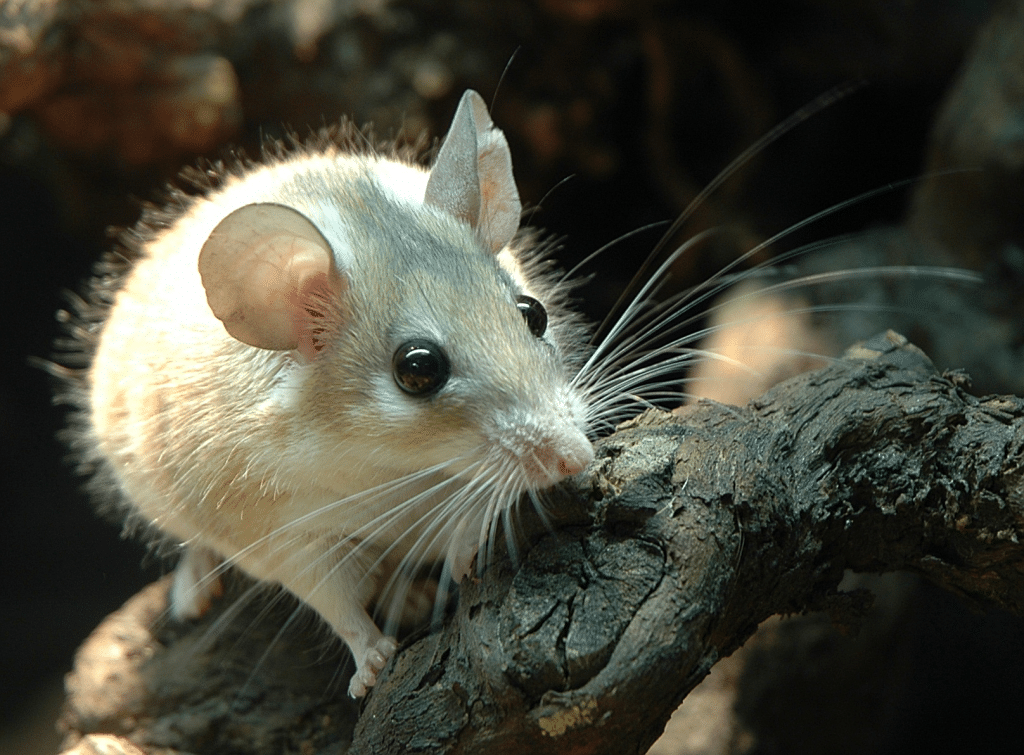
A small rodent endemic to the wet zone forests of Sri Lanka, characterized by its unique spiny fur and limited distribution.
Survives in increasingly fragmented forest Habitats with remarkable adaptability.
- Origin: Sri Lanka
- Scientific name: Mus Fernandoni
- Habitat: Wet zone tropical forests
- Fun Fact: Has specialized spiny fur for protection against predators
40. Cactus Mouse
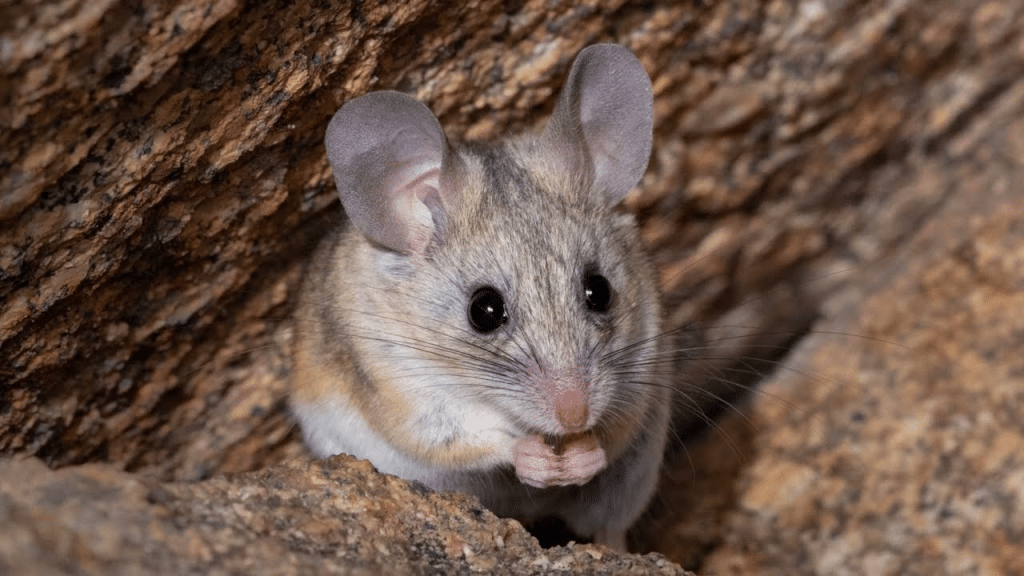
A small rodent native to the arid regions of southwestern North America, uniquely adapted to survive in harsh desert environments.
Perfectly camouflaged and equipped to thrive in extreme temperatures and limited water conditions.
- Origin: Southwestern United States, Northern Mexico
- Scientific name: Peromyscus eremicus
- Habitat: Deserts, rocky areas, scrublands
- Fun Fact: It can obtain most of its water from metabolic processes, rarely needing to drink.
Unpopular Animals Starting With C
41. Chacoan Mara
Large rodents resembling a cross between a rabbit and a deer, with long legs built for running.
They have distinctive brown fur with white underparts and a unique social structure where they form monogamous pairs.
- Origin: South America (Argentina, Paraguay)
- Scientific name: Dolichotis Salinicola
- Habitat: Semi-arid lowlands and scrubland areas
- Fun Fact: They are one of the few monogamous rodent species, and pairs often sit close together to strengthen their bond.
42. Chinese Goral
Goat-like bovids with stocky bodies and short, sharp horns are present in both males and females.
Their woolly gray-brown coat and strong hooves make them excellent at navigating steep, rocky terrain.
- Origin: Eastern and Central Asia
- Scientific name: Naemorhedus griseus
- Habitat: Steep, rocky mountainous areas and dense forests
- Fun Fact: They can jump up to 6 feet high from a standing position to escape predators.
43. Cuscus
Tree-dwelling marsupials with round faces, thick fur, and strong prehensile tails.
Their specialized toe arrangement and gripping tail allow them to move slowly but surely through the canopy.
- Origin: Australia and indo-pacific islands
- Scientific name: Phalanger
- Habitat: Tropical rainforests and mangrove forests
- Fun Fact: They have color vision, rare among marsupials, to help them select ripe fruits.
44. Crab-Eating Macaque
Medium-sized primates with gray-brown fur and distinctive pink faces.
Their cheek pouches can store as much food as their stomach, while their dexterous hands allow them to forage in water.
- Origin: Southeast Asia
- Scientific name: macaca fascicularis
- Habitat: Mangrove swamps, coastal areas, and tropical forests
- Fun Fact: They’ve learned to use stone tools to crack open shellfish and nuts.
45. Cape Grysbok
Small antelope with reddish-brown coats speckled with white flecks.
Their short, sturdy bodies and powerful legs allow them to freeze or flee when threatened, while their small size helps them navigate dense vegetation.
- Origin: Southern Africa
- Scientific name: Raphicerus Melanotis
- Habitat: Fynbos, coastal shrubland, and dense vegetation
- Fun Fact: They can survive without drinking water, getting moisture from the plants they eat.
46. Central American Woolly Opossum
Small arboreal marsupial with thick woolly fur and a prehensile tail perfect for tree life.
Their large eyes and sensitive whiskers help them navigate through dark forest canopies, while their padded feet provide excellent grip.
- Origin: Central America
- Scientific name: Caluromys Derbianus
- Habitat: Tropical and subtropical forests
- Fun Fact: They can hang by their tail while using both hands to gather and eat fruit.
47. Colombian Weasel
Small arboreal marsupial with thick woolly fur and a prehensile tail perfect for tree life.
Their large eyes and sensitive whiskers help them navigate through dark forest canopies, while their padded feet provide excellent grip.
- Origin: Central America
- Scientific name: Caluromys Derbianus
- Habitat: Tropical and Subtropical Forests
- Fun Fact: They can hang by their tail while using both hands to gather and eat fruit.
48. Crested Rat
large rodent with distinctive black and white crest of hair along its back that can be raised when threatened.
They have specialized hairs that absorb toxic compounds from poison arrow trees for self-defense.
- Origin: East Africa
- Scientific name: Lophiomys Imhausi
- Habitat: Rocky areas and forests
- Fun Fact: They chew bark from poison arrow trees and apply the toxic saliva to their specialized hollow hairs.
49. Corsac Fox
Small fox with pale, greyish-red fur adapted for life in arid environments.
Their large ears help regulate body temperature and locate prey beneath the snow, while their thick winter coat provides excellent insulation.
- Origin: Central Asia
- Scientific name: Vulpes Corsac
- Habitat: Steppes and Semi-Deserts
- Fun Fact: They can survive without direct water access, getting moisture from their prey.
50. Ceylon Junglefowl
Wild chicken species with vibrant plumage in males featuring golden-orange feathers and metallic purple wing patches.
They have excellent eyesight and strong legs for scratching the forest floor for food.
- Origin: Sri Lanka
- Scientific name: Gallus Lafayettii
- Habitat: Tropical forests and scrubland
- Fun Fact: Males perform an elaborate courtship dance that includes dropping one wing and circling the female.
51. Cacomistle
Small, arboreal carnivore with a ringed tail and cat-like appearance.
Their rotating ankles and sharp claws make them excellent climbers, while their large eyes help them hunt at night.
- Origin: Central America
- Scientific name: Bassariscus Sumichrasti
- Habitat: Tropical and Mountain Forests
- Fun Fact: Their name comes from the Nahuatl language, meaning “half mountain lion” due to their agile climbing abilities.
52. Caucasian Squirrel
Small tree squirrel with rich reddish-brown fur and distinctive ear tufts that vary seasonally.
Their powerful hind legs and sharp claws enable them to perform impressive acrobatic feats in the forest canopy.
- Origin: Caucasus region and northern Iran
- Scientific name: Sciurus Anomalus
- Habitat: Deciduous and Mixed Forests
- Fun Fact: They can rotate their ankles 180 degrees to climb down trees headfirst.
53. Congo Clawless Otter
Large, web-footed otter with velvety brown fur and reduced claws, unique among otters.
Their sensitive fingers help them locate prey in muddy waters, while their powerful jaws can crush hard-shelled prey.
- Origin: Central Africa
- Scientific name: Aonyx Congicus
- Habitat: Rivers, Swamps, and Rainforest Streams
- Fun Fact: They use their sensitive fingers like human hands to catch prey, making them the most manually dexterous of all otters.
54. Cuban Boa (land-dwelling)
Large, muscular snake with intricate diamond patterns and excellent climbing abilities.
Their heat-sensing pits allow them to detect warm-blooded prey in complete darkness, while their strong bodies can constrict multiple prey items.
- Origin: Cuba
- Scientific name: Chilabothrus Angulifer
- Habitat: Forests, Caves, and Rocky areas
- Fun Fact: They can coordinate their hunting in caves to catch sleeping bats.
55. Cuvier’s Gazelle
Small, elegant antelope with distinctive facial markings and curved horns in both sexes.
Their long legs and light build make them incredibly agile on steep, rocky terrain.
- Origin: North Africa
- Scientific name: gazella cuvieri
- Habitat: mountain slopes and semi-desert areas
- Fun Fact: they can run at speeds of up to 50 mph and leap over obstacles twice their height.
56. Common Kusimanse
Small, social mongoose with reddish-brown fur and a long, bushy tail.
Their specialized snouts and sharp claws help them dig for insects, while their keen sense of smell guides their foraging.
- Origin: West Africa
- Scientific name: crossarchus obscurus
- Habitat: rainforests and dense woodlands
- Fun Fact: they live in highly organized social groups that cooperate in hunting and raising young.
57. Chinese Ferret-Badger
Small carnivore with distinctive white facial markings and a long, furry tail.
Their flexible bodies and strong claws make them excellent diggers and climbers, while their masked face gives them a raccoon-like appearance.
- Origin: Eastern Asia
- Scientific name: Melogale Moschata
- Habitat: Forest edges and agricultural areas
- Fun Fact: They produce a musky secretion from their anal glands that smells like violets.
58. Collared Pika
Small rabbit-like mammals with rounded ears and no visible tail.
They are excellent at gathering and storing plants for winter, creating distinctive “hay piles” of vegetation that they meticulously dry and preserve.
- Origin: North America
- Scientific name: Ochotona Collaris
- Habitat: Rocky mountain slopes and alpine meadows
- Fun Fact: They make distinctive alarm calls that sound like the squeaking of a toy.
59. Crowned Sifaka
Medium-sized lemur with silky white fur and a distinctive dark crown on their head.
Their powerful legs allow them to move through the forest by leaping sideways in an upright position, a movement known as “dancing.”
- Origin: Madagascar
- Scientific name: Propithecus Coronatus
- Habitat: Dry deciduous forests
- Fun Fact: They can leap up to 30 feet between trees in a single bound.
60. Chacoan Tortoise
Medium-sized tortoise with a domed shell and strong limbs adapted for burrowing. their dark brown carapace helps them regulate temperature in their arid Habitat.
- Origin: South America
- Scientific name: Chelonoidis Chilensis
- Habitat: Dry grasslands and scrubland
- Fun Fact: They can survive droughts by estivating in deep burrows for months.
61. Cameroonian Forest Shrew
Small insectivore with velvety dark fur and a long, sensitive nose.
Their high metabolism requires them to eat almost constantly, while their specialized feet help them navigate forest floors.
- Origin: Cameroon
- Scientific name: Myosorex Okuensis
- Habitat: mountain forests and grasslands
- Fun Fact: They must eat every 2-3 hours to survive due to their incredibly fast metabolism.
62. Chestnut-Spotted Civet
Medium-sized carnivore with distinctive chestnut-colored spots on dark fur.
Their retractable claws and excellent night vision make them efficient nocturnal hunters.
- Origin: Southeast Asia
- Scientific name: Viverra Megaspila
- Habitat: Tropical Forests and Grasslands
- Fun Fact: They produce a valuable musk used in traditional medicine and perfume.
63. Cameroon Climbing Mouse
Small rodent with long whiskers and specialized foot pads for climbing.
Their prehensile tail helps them balance while moving through vegetation and gathering food.
- Origin: Cameroon
- Scientific name: Dendromus Oreas
- Habitat: Mountain forests and grasslands
- Fun Fact: They can grasp branches with their partially prehensile tails while gathering seeds.
64. Coppery Titi Monkey
Small primates with soft, reddish-brown fur and long, non-prehensile tails.
They form strong pair bonds and often sit with their tails entwined, while their specialized vocal cords allow complex duet calls.
- Origin: South America
- Scientific name: Callicebus Cupreus
- Habitat: Rainforest canopies
- Fun Fact: Mated pairs perform synchronized dawn chorus duets to mark their territory.
65. Cinnamon Bear (a Subspecies of The American Black Bear)
A color variant of the American black bear with distinctive reddish-brown to cinnamon-colored fur.
They possess powerful muscles and sharp claws for climbing trees and digging, along with an excellent sense of smell that can detect food from miles away.
- Origin: Western North America
- Scientific name: Ursus Americanus Cinnamomum
- Habitat: Mountain forests and meadows
- Fun Fact: Their cinnamon coloring helps them blend into reddish pine bark better than black bears.
66. Cinnamon Screech Owl
Small owl with reddish-brown plumage and distinctive ear tufts that help break up their silhouette.
Their asymmetrically placed ear openings give them extraordinary 3-D hearing capabilities for locating prey.
- Origin: Americas
- Scientific name: Megascops Petersoni
- Habitat: Mountain forests and woodlands
- Fun Fact: They can turn their heads 270 degrees to scan for prey without moving their bodies.
68. Caprivi Striped Mouse
small rodent with distinctive dark stripes running down their back on light brown fur.
Their long hind feet allow them to hop quickly through grass, while their strong teeth can crack open tough seeds.
- Origin: Southern Africa
- Scientific name: Rhabdomys Bechuanae
- Habitat: Grasslands and Savanna
- Fun Fact: They create complex tunnel systems with separate chambers for sleeping and food storage.
69. Common Warthog
strong-bodied pig with distinctive upward-curving tusks and facial warts.
Their padded knees allow them to feed on their knees while grazing, and their tails stand straight up like antennas when running.
- Origin: Africa
- Scientific name: Phacochoerus Africanus
- Habitat: Savannas, Grasslands, and Woodlands
- Fun Fact: They often enter their burrows backward to maintain the ability to defend against predators.
70. Cambodian Striped Squirrel
Small squirrel with distinctive black and white stripes running along their sides.
Their sharp claws and excellent balance make them adept at running along thin branches and leaping between trees.
- Origin: Southeast Asia
- Scientific name: Tamiops Rodolphii
- Habitat: Tropical Forests and Gardens
- Fun Fact: They can hang upside down by their hind feet while feeding on fruits.
71. Crowned Lemur
medium-sized lemur with distinct crown-like markings on their head and color differences between males and females.
Their long, powerful legs enable them to move swiftly through the forest canopy.
- Origin: Madagascar
- Scientific name: Eulemur Coronatus
- Habitat: Dry Deciduous and Rainforests
- Fun Fact: Males are reddish-brown while females are gray, making them one of the most sexually dichromatic primates.
72. Common Agile Gibbon
small apes with exceptionally long arms and skilled acrobatic abilities that allow them to swing through trees at speeds up to 35 mph.
Their distinctive vocal calls can be heard for miles through the forest and are used for pair bonding.
- Origin: Southeast Asia
- Scientific name: Hylobates Agilis
- Habitat: Tropical Rainforests
- Fun Fact: They practice monogamy and sing complex duets with their mates to strengthen bonds.
73. Congo Peafowl
large, forest-dwelling bird with metallic blue-green plumage and distinctive vertical crest.
Unlike their Indian cousins, both males and females have similar coloring and relatively short tails.
- Origin: Democratic republic of the congo
- Scientific name: Afropavo Congensis
- Habitat: Primary and secondary rainforests
- Fun Fact: They are the only species of peafowl native to Africa.
74. Cryptic Treehunter
Small forest bird with brown plumage and specialized climbing abilities.
Their strong feet and stiff tail feathers help them climb tree trunks while searching for insects.
- Origin: North East Brazil
- Scientific name: Cichlocolaptes Mazarbarnetti
- Habitat: Atlantic forest
- Fun Fact: They forage by moving upward on tree trunks in a spiral pattern.
75. Chestnut-bellied Sandgrouse
Ground-dwelling bird with cryptic plumage and specialized breast feathers that can absorb water.
Males have distinctive chestnut bellies, while females are more camouflaged.
- Origin: Africa and Asia
- Scientific name: Pterocles exustus
- Habitat: Semi-desert and arid grasslands
- Fun Fact: Males can carry water to their chicks in their specialized breast feathers.
76. Crocidura (a Genus of Shrews)
Small insectivores with distinctive white teeth and high metabolic rates require constant feeding.
Their sensitive whiskers help them navigate and locate prey in the dark.
- Origin: Africa, Europe, and Asia
- Scientific name: Crocidura Genus
- Habitat: Various, from forests to deserts
- Fun Fact: They practice “caravanning” where young follow their mother in a line, each holding the tail of the one in front.
77. Coppery Brushtail Possum
Tree-dwelling marsupial with thick reddish-brown fur and a characteristic bushy tail.
Their strong prehensile tail acts as a fifth limb while climbing and gathering food.
- Origin: Australia and New Guinea
- Scientific name: Trichosurus Johnstonii
- Habitat: tropical rainforests
- Fun Fact: they can carry building materials for their nests in their prehensile tail.
78. Common Dwarf Mongoose
Small, social carnivores with slender bodies and sharp claws for digging.
They live in highly organized groups with complex social structures and cooperative care of the young.
- Origin: Eastern and Southern Africa
- Scientific name: Helogale Parvula
- Habitat: Savannas and Woodlands
- Fun Fact: They have a symbiotic relationship with hornbills, warning each other of approaching predators.
79. Cameroonian Pouched Rat
Large rodent with cheek pouches for carrying food and elongated bodies.
Their excellent memory allows them to remember complex paths and identify various scents.
- Origin: Cameroon
- Scientific name: Cricetomys sp.
- Habitat: Forests and Grasslands
- Fun Fact: Some species are trained to detect land mines and tuberculosis using their acute sense of smell.
80. Cuban Brown Anole
Small lizard with excellent color-changing abilities and a distinctive dewlap used in displays.
Males have a ridge along their back that they can raise when threatened or during courtship.
- Origin: Cuba
- Scientific name: Anolis Sagrei
- Habitat: Various, from forests to urban areas
- Fun Fact: They can drop their tail as a defense mechanism and regrow it within weeks.
Miscellaneous Animals with C
81. Cave Spiny Rat
82. Chestnut-Backed Antelope
83. Common Mole Rat
84. Crested Pangolin
85. Chestnut-Spotted Squirrel
86. Crocodile Monito
87. Cactus Longhorn Beetle
88. Chestnut-Backed Bushbaby
89. Common Greater Cane Rat
90. Chacoan Mouse Opossum
91. Common Rock Rat
92. Crested Linsan
93. Cave Gecko
94. Cloud Forest Rat
95. Cryptic Forest Hedgehog
96. Cotton-Top Tamarin
97. Coconut Crab
98. Coquerel’s Sifaka
99. Cantil
100. Cuscus
101. Common Toad
102. Cane Toad
103. Cave Salamander
104. Crested Newt
105. Common Frog
106. Crane Fly
107. Cricket
108. Cicada
109. Carpenter Ant
110. Cockchafer Beetle
111. Colorado Beetle
112. Common Wasp
113. Cabbage White Butterfly
114. Corn Earworm
115. Carpenter Bee
116. Camel Spider
117. Chilean Rose Tarantula
118. Cross Spider
119. Cardinal Spider
120. Cave Spider
121. Clouded Leopard
122. Common Seal
123. Common Dolphin
124. Common Shrew
125. Common Vole
126. Cotton Rat
127. Chinese Hamster
128. Common Squirrel Monkey
129. Common Marmoset
130. Common Water Buffalo
131. Common Wombat
132. Common Zebra
133. Common Duiker
134. Common Tree Shrew
135. Common Degu
136. Cape Buffalo
137. Capuchin Monkey
138. Caribou
139. Chinese Pangolin
140. Cotton-top Tamarin
141. Common Tenrec
142. Common Dormouse
143. Colobus Monkey
144. Common Hedgehog
145. Common Porcupine
146. Common Genet
147. Cape Robin
148. Crimson Rosella
149. Common Starling
150. Common Magpie
151. Common Raven
152. Cedar Waxwing
153. Common Kingfisher
154. Common Nighthawk
155. Common Loon
156. Common Snipe
157. Common Sandpiper
158. Common Tern
159. Common Eider
160. Carrion Crow
161. Common Swift
162. Clown Loach
163. Carp Bream
164. Common Roach
165. Common Carp
166. Common Sole
167. Common Skate
168. Common Sturgeon
169. Common Minnow
170. Common Dace
171. Common Blenny
172. California Condor
173. Chinese Alligator
174. Chinese Giant Salamander
175. Cross River Gorilla
176. Cape Lion
177. Ceylon Elephant
178. Celebes Crested Macaque
179. Chinese Tiger
180. Cuban Crocodile
181. Cape Mountain Zebra
181. Caspian Tiger
182. Central American Spider Monkey
183. Carpathian Lynx
184. Chinese Forest Musk Deer
185. Caucasian Leopard
186. Colombian White-Faced Capuchin
187. Congo Lion
188. Cameroon Gorilla
189. Central Asian Brown Bear
190. Cape Fox
191. Chihuahua Dog
192. Chartreux Cat
193. Clydesdale Horse
194. Cornish Rex Cat
195. Chinese Shar Pei Dog
196. Chow Chow Dog
197. Cairn Terrier
198. Collie Dog
199. Chinchilla Persian Cat
200. Cornwall Rex Cat
201. Carnotaurus
202. Compsognathus
203. Coelophysis
204. Cryptoclidus
205. Centrosaurus
206. Ceratosaurus
207. Chasmosaurus
208. Carcharodontosaurus
209. Corythosaurus
210. Camarasaurus
211. Common Bottlenose Dolphin
212. Common Minke Whale
213. Common Seal
214. California Sea Lion
215. Common Porpoise
216. Caspian Seal
217. Cape Fur Seal
218. Common Beaked Whale
219. Commerson’s Dolphin
220. Cuvier’s Beaked Whale
Recently Discovered Species:
221. Cambodian Striped Rabbit
222. Cambodian Tailorbird
223. Cat Ba Langur
224. Calumma Tarzan (Madagascar Chameleon)
225. Cape Melville Shade Skink
226. Cambodian Kukri Snake
227. Cercopithecus Lomamiensis (lesula Monkey)
228. Chacoan Peccary
229. Cyclopes Ida (dwarf Silky Anteater)
230. Cyrtodactylus Vilaphongi (gecko Species)
231. Catajapyx Aquilonaris (northern Forcepstail)
232. Chelonoidis Donfaustoi (galápagos Tortoise)
233. Cacajao Hosomi (golden-backed Uakari)
234. Cnemaspis Selenolagus (half-Moon Bent-Toed Gecko)
235. Capricornis Sumatraensis Thar (Himalayan serow)
Wrapping It Up
The remarkable diversity of creatures beginning with C shows nature’s incredible creativity and adaptability across all habitats.
Hopefully, this comprehensive guide has expanded your knowledge about these interesting creatures.
Perhaps you’ve discovered animals you’d never encountered, like the Cuscus or the Cuban Solenodon, or learned surprising facts about familiar ones like Crocodiles and Chimpanzees.
Remember, all 235 animals on our list contribute to Earth’s biodiversity.
Together, let’s continue appreciating and protecting these amazing creatures and all wildlife that makes our planet such an extraordinary place to call home!















